June 17: Perge
Breakfast at the Rixos was once again the huge, varied breakfast buffet that seems the norm in good European-style hotels in Turkey. Never seen the like in the US. Maybe we just choose cheap hotels for ourselves. Thank you Odyssey, for making us go to five star hotels.
Our last day in Turkey. Today we visit Perge, on the outskirts of Antalya. Perge is almost as amazing as Ephesus, but nowhere near as crowded. It was hot, but there was a nice breeze, and some shady trees.
Perge (or Perga) was a city for over a thousand years. Established in about 1000 BC, it flourished during the Roman period, the time of Alexander the Great (356-323 BC). Perge was a viable metropolis until the thirteenth century.
The sign at the entrance. "Keep clear the ancienty city". Love it.
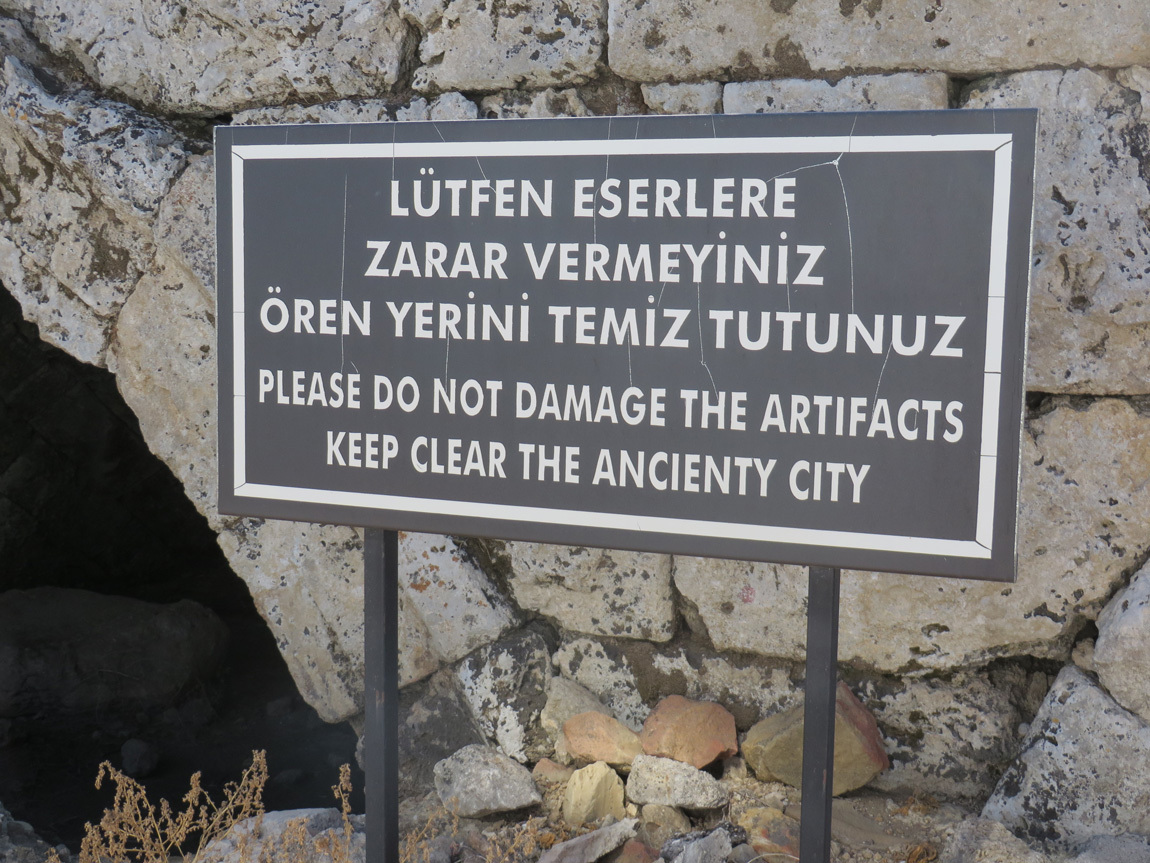
Walking to the ancienty theater.
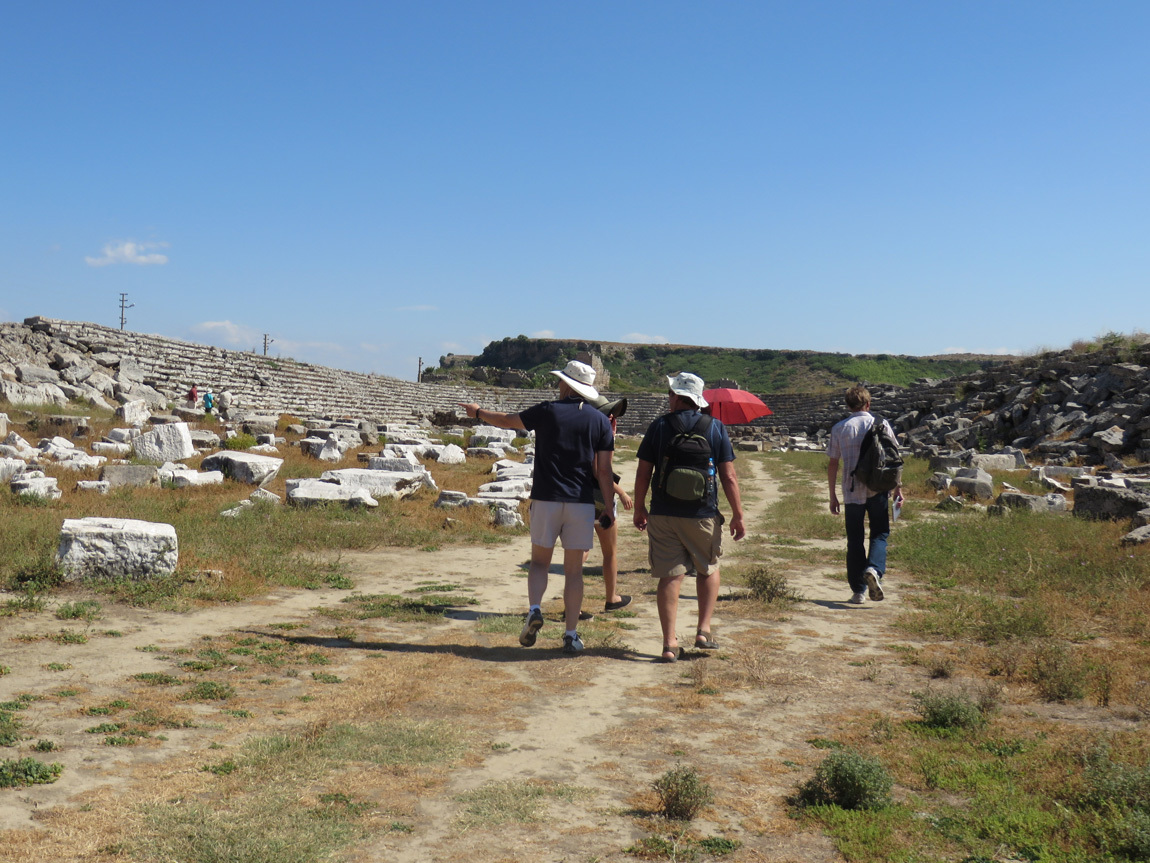
Ruins and power lines.
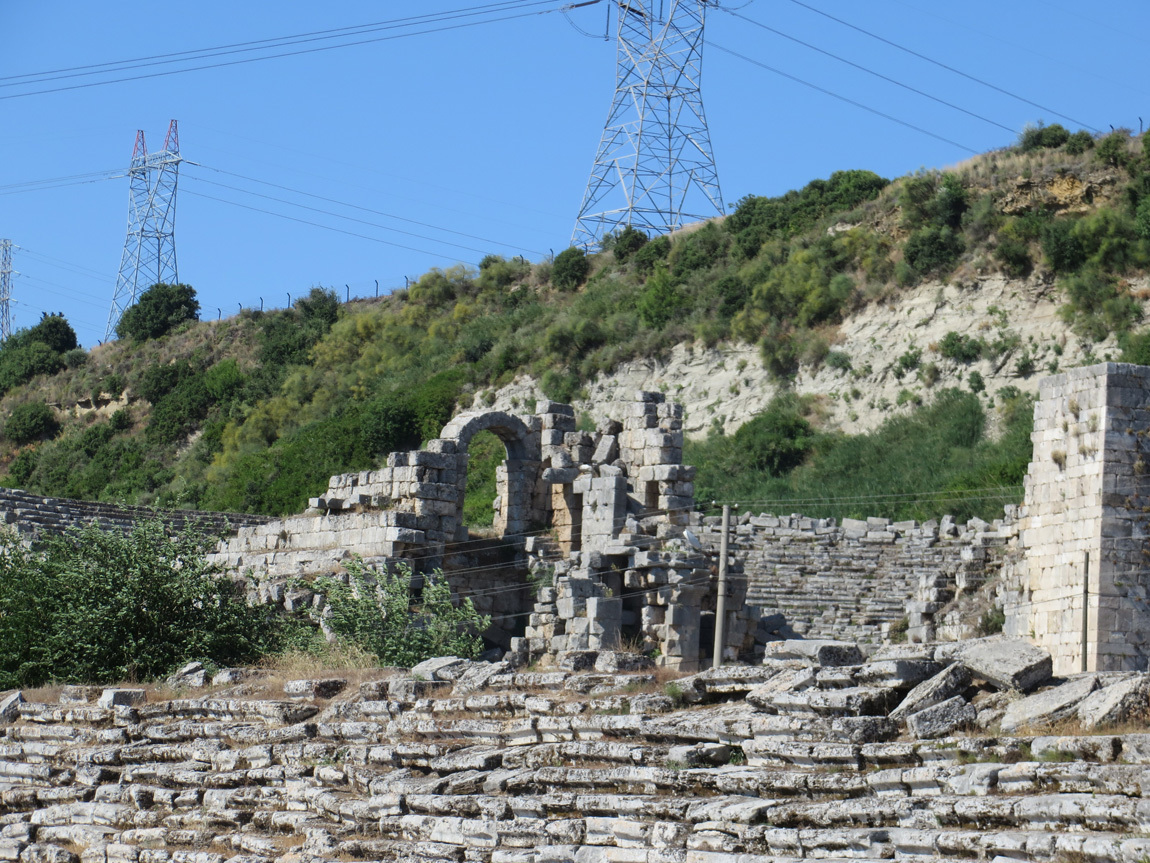
Archways into the stadium area. Some of the archways end not in a passageway, but in a niche or a room.
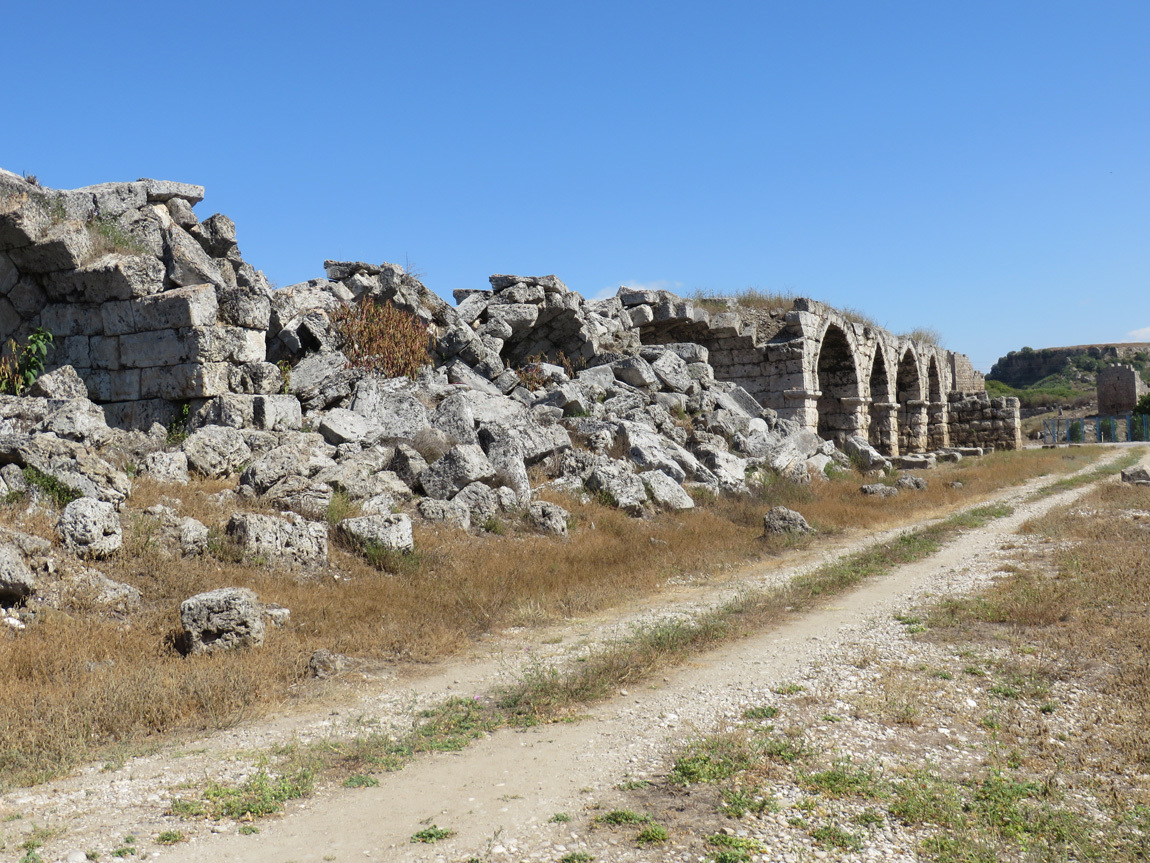
John starting through an archway. Back in the times of old, he would have handed a token to pass through the passageway to attend the games.
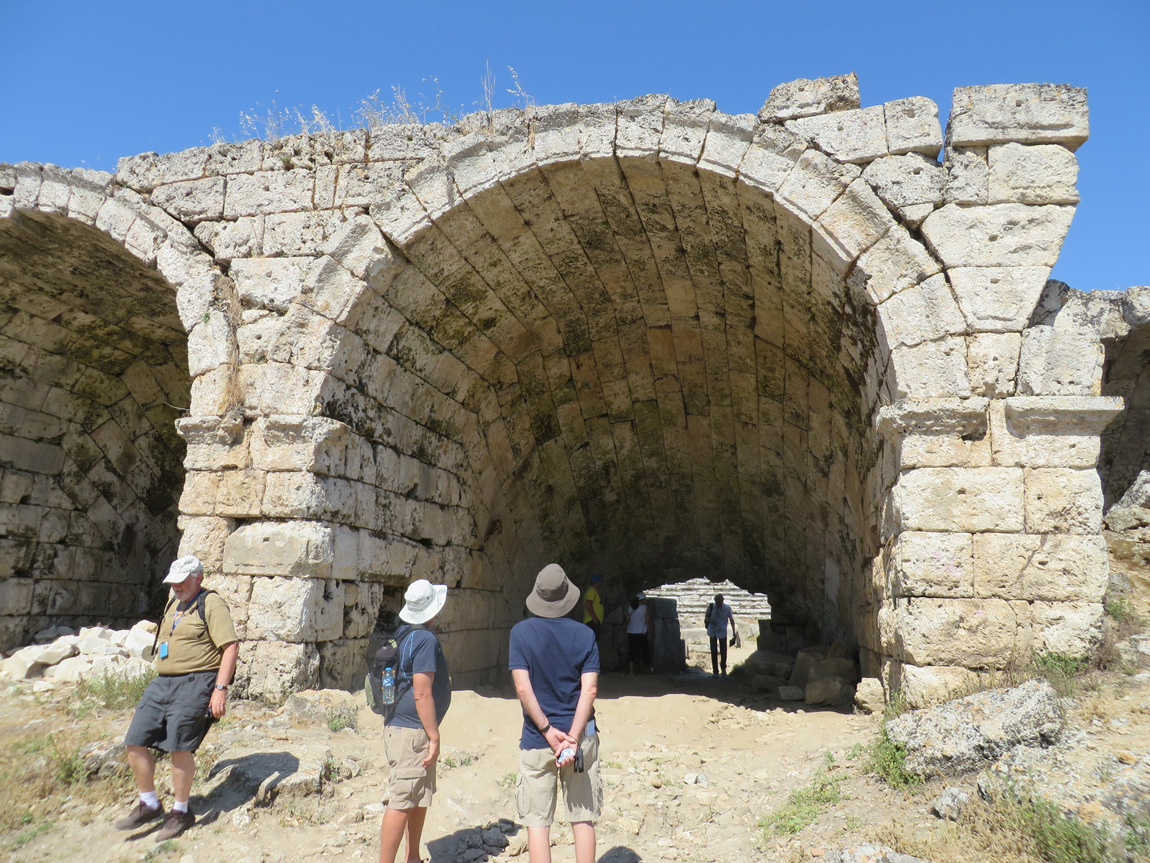
Archways and niches.
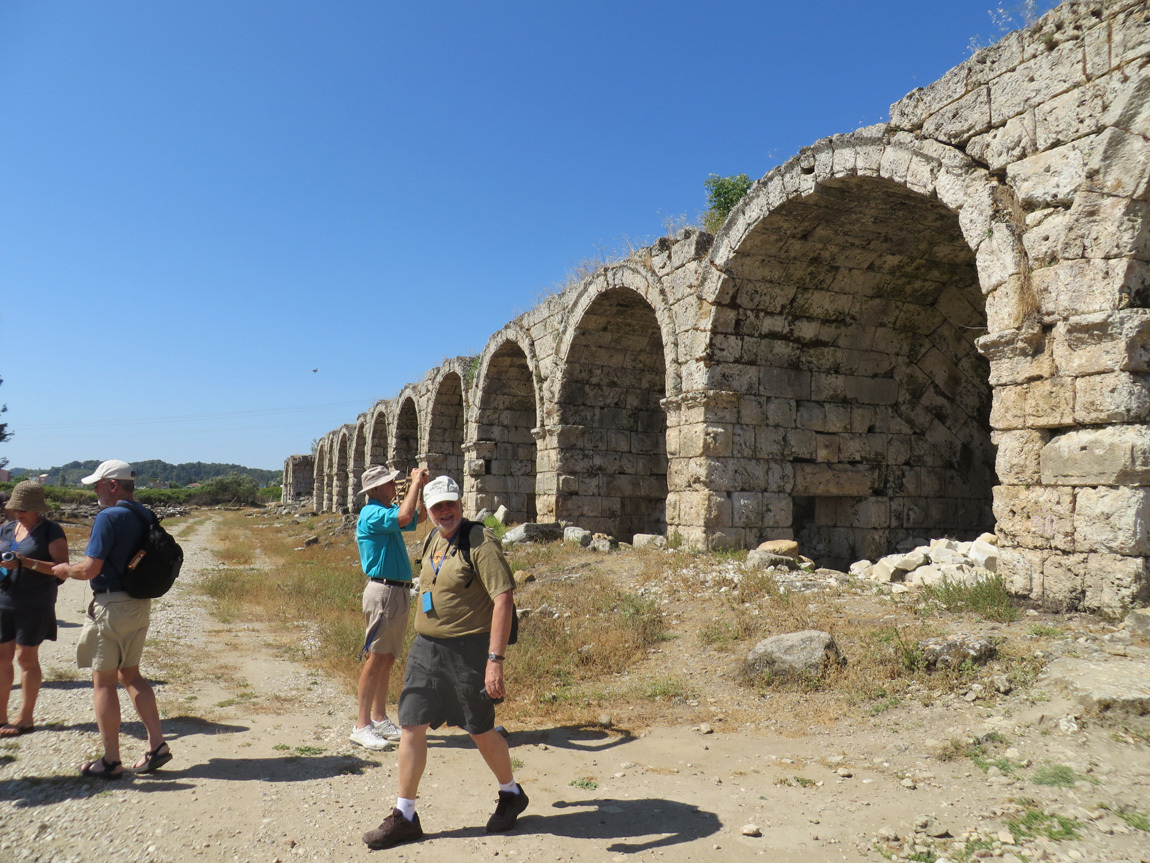
I like the trees and the columns.
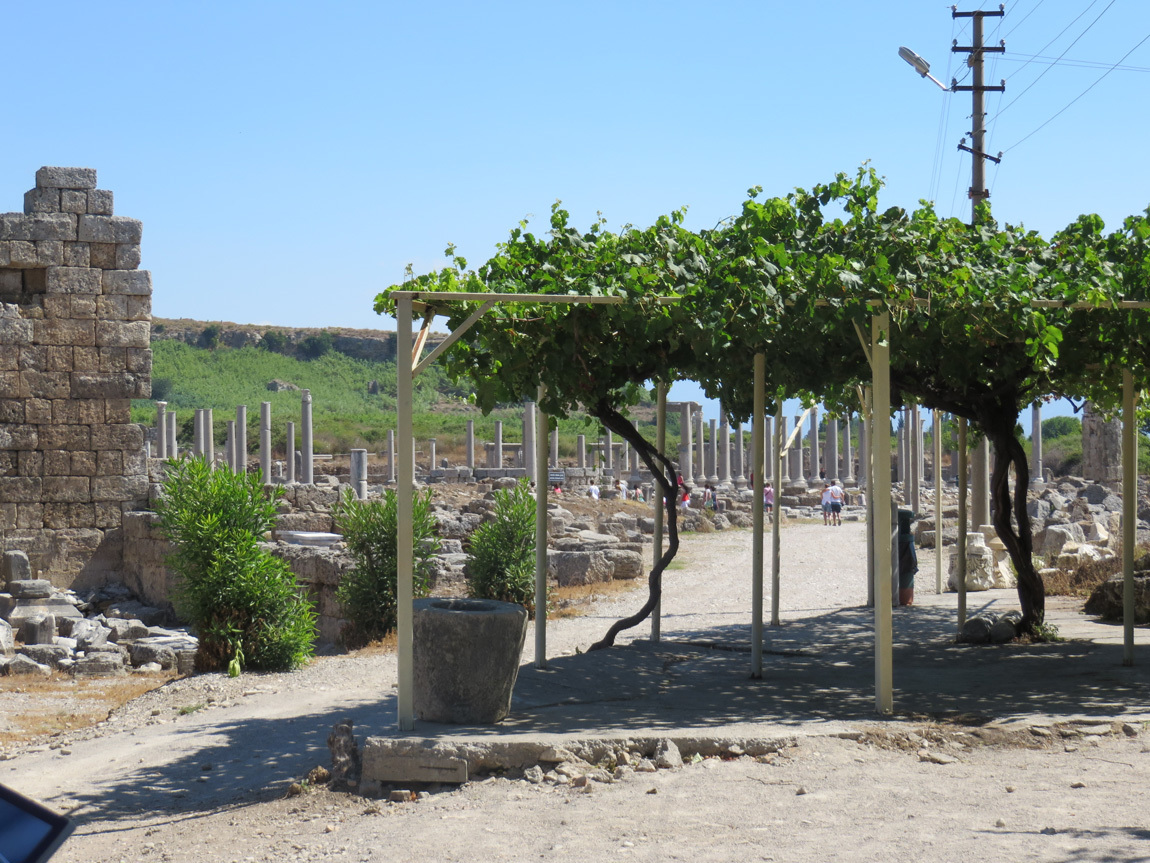
This is one of the doors into the ancient city. It dates to the Roman and Hellenistic times, about 3-4 AD.
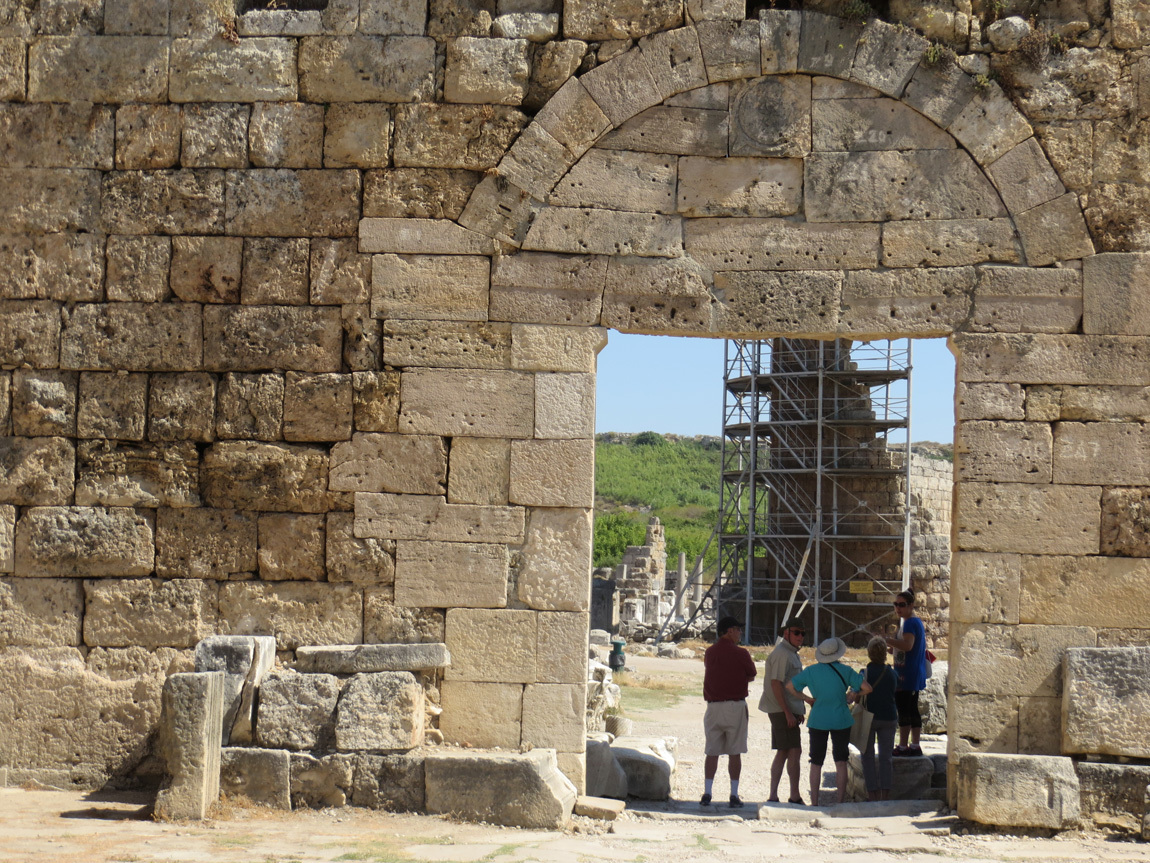
Detail work:
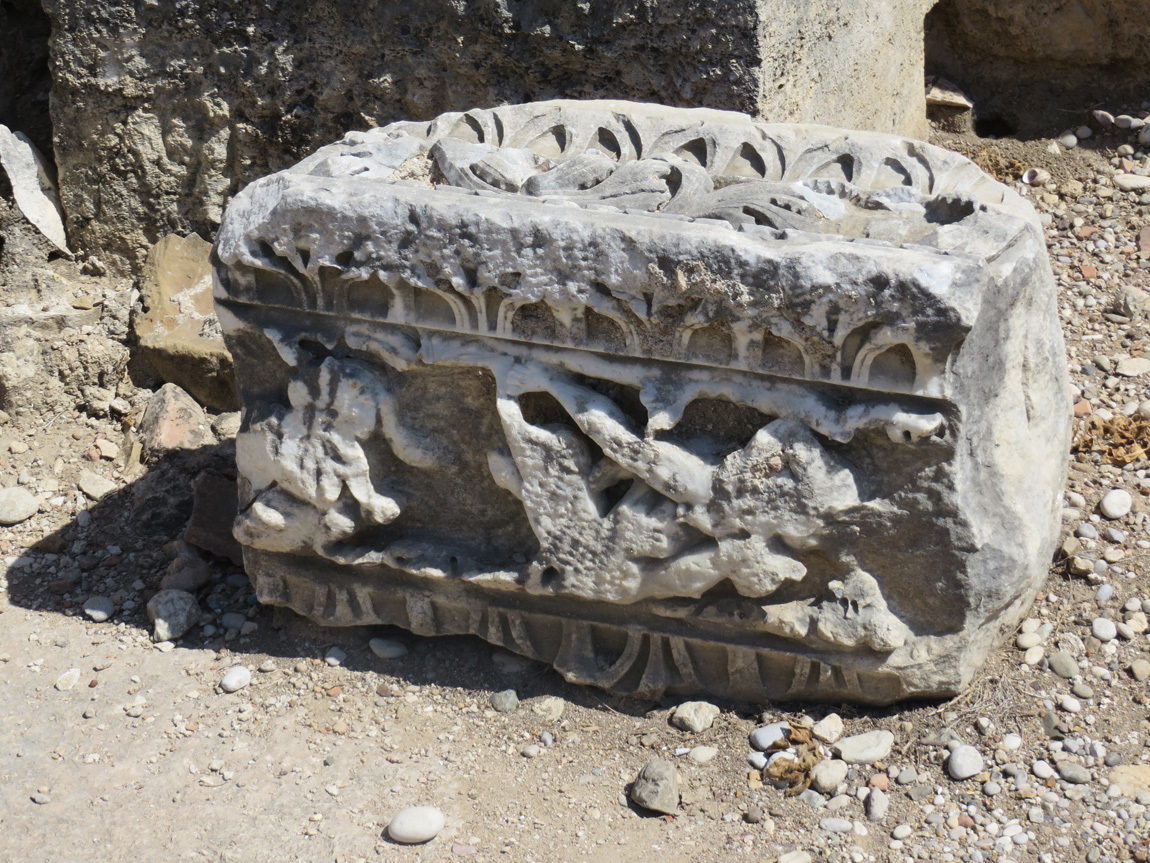
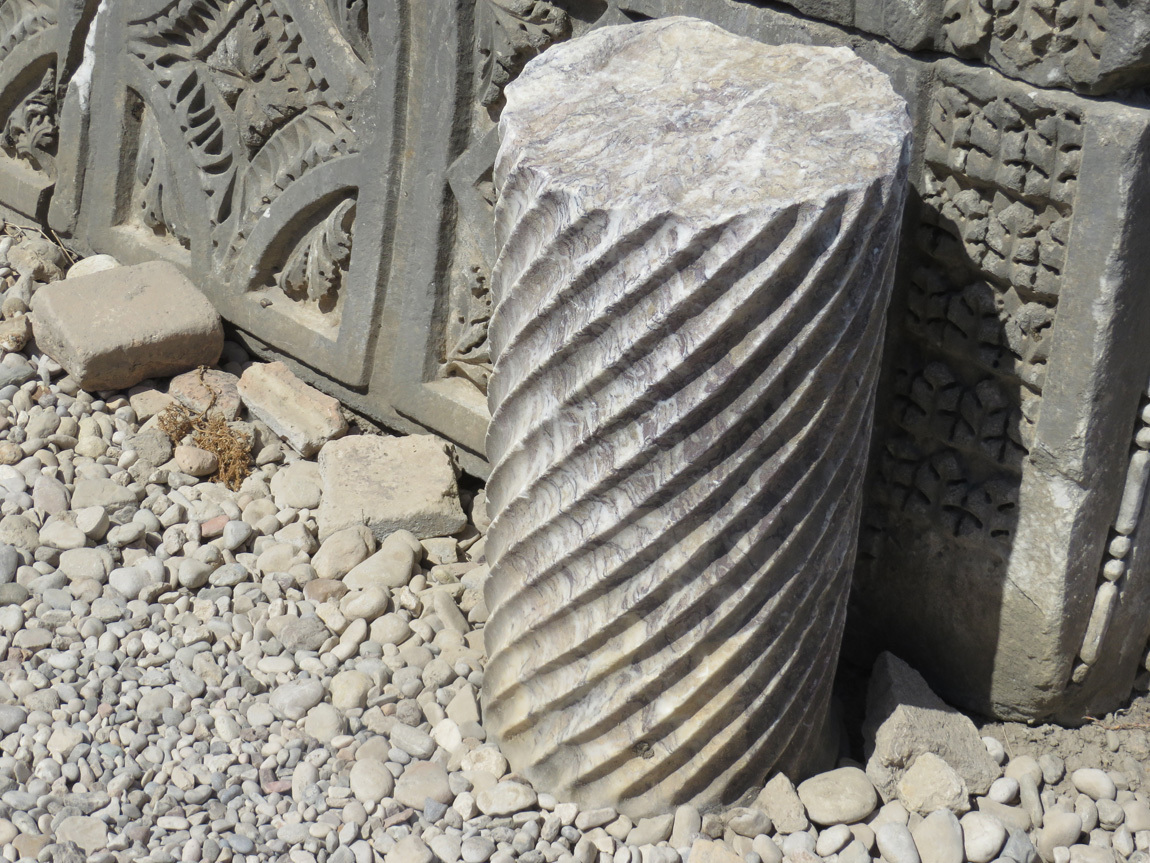
Many of the sculptures that decorated the area are now in the Antalya Museum. Below is a photo of a field of pieces of the structures and columns and part of a building with archways. Also notice the restoration efforts of one of the towers.
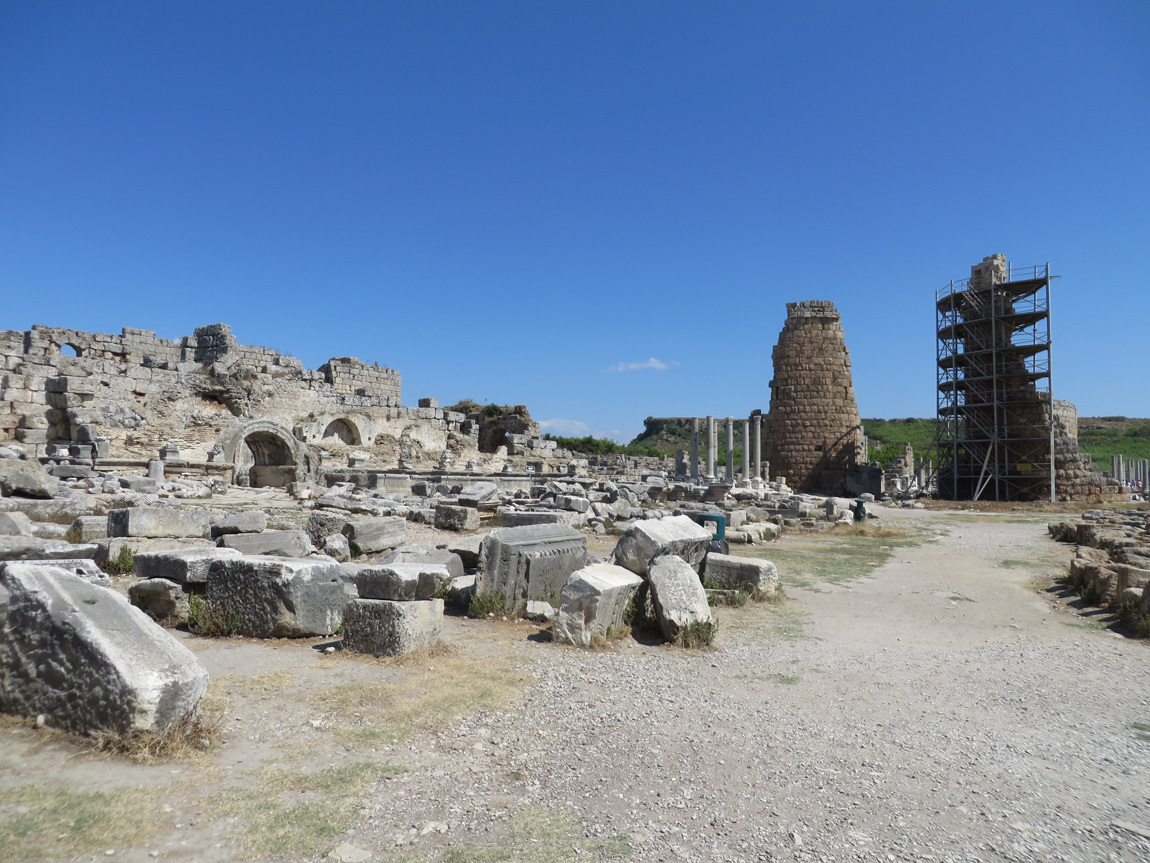
This building is called a palaestra, a rectangular court surrounded by columns. The palaestra has rooms where athletes would train and all would gather to socialize. We saw rooms where they trained, dressed, and storage rooms for clothes and sundries. There were hot, warm, and cold baths. Rooms for great feasts, and then rooms where they purged their food so they could eat more. (This room for purging, vomitorium, is somewhat disputed when I try to Google for more information, although Ali told us it was so.)
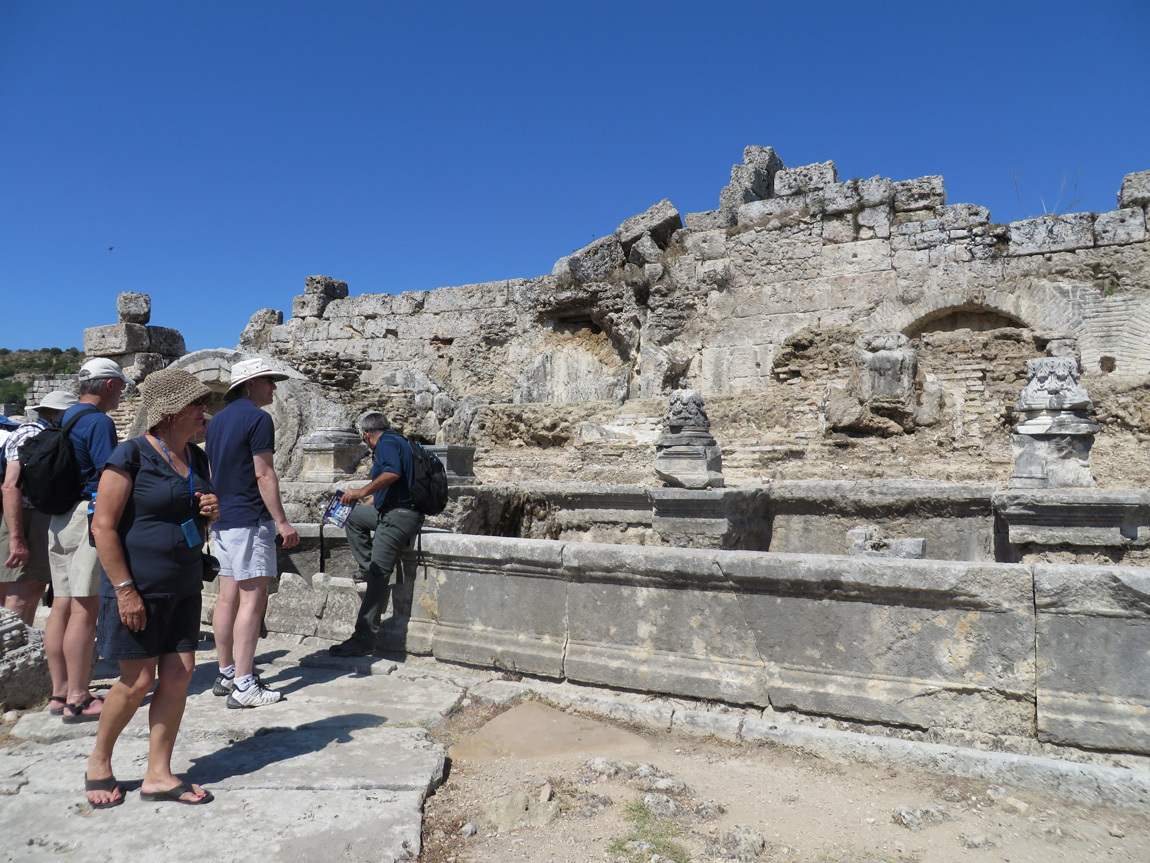
One of the pools.
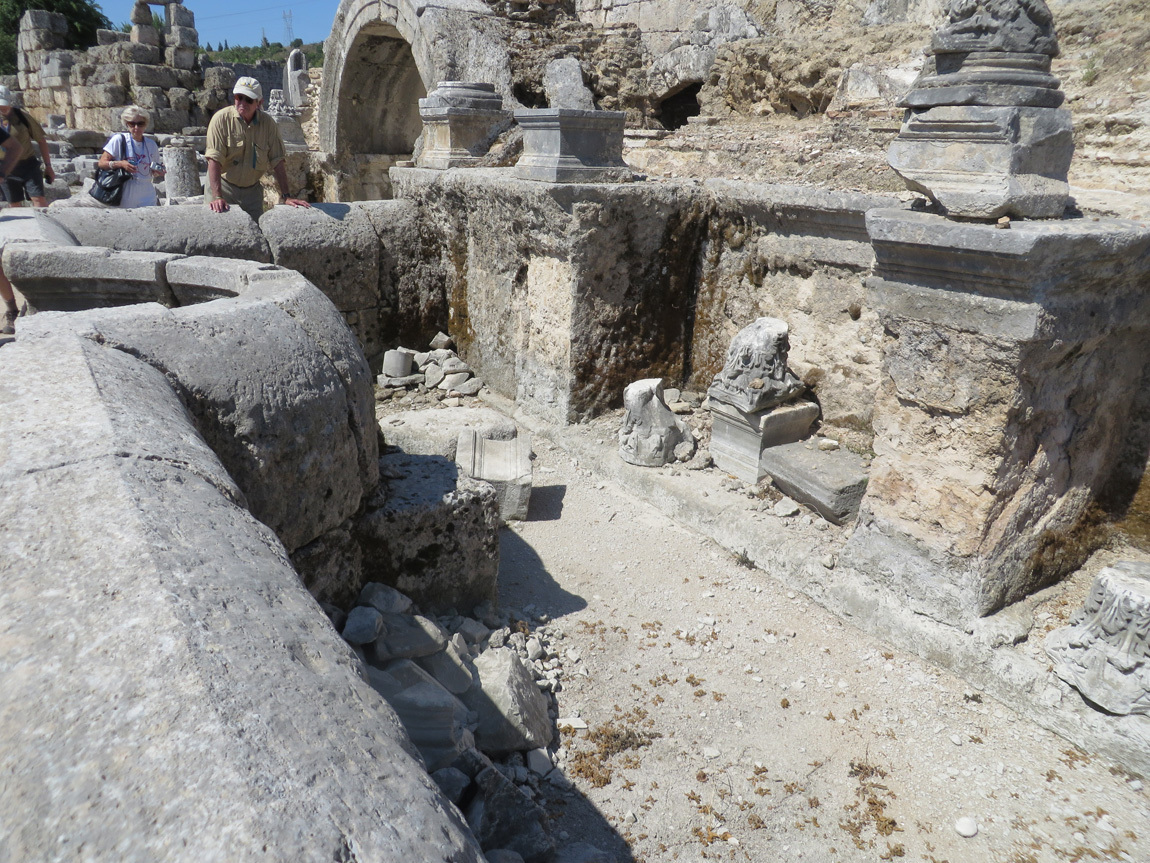
Pipes for water.
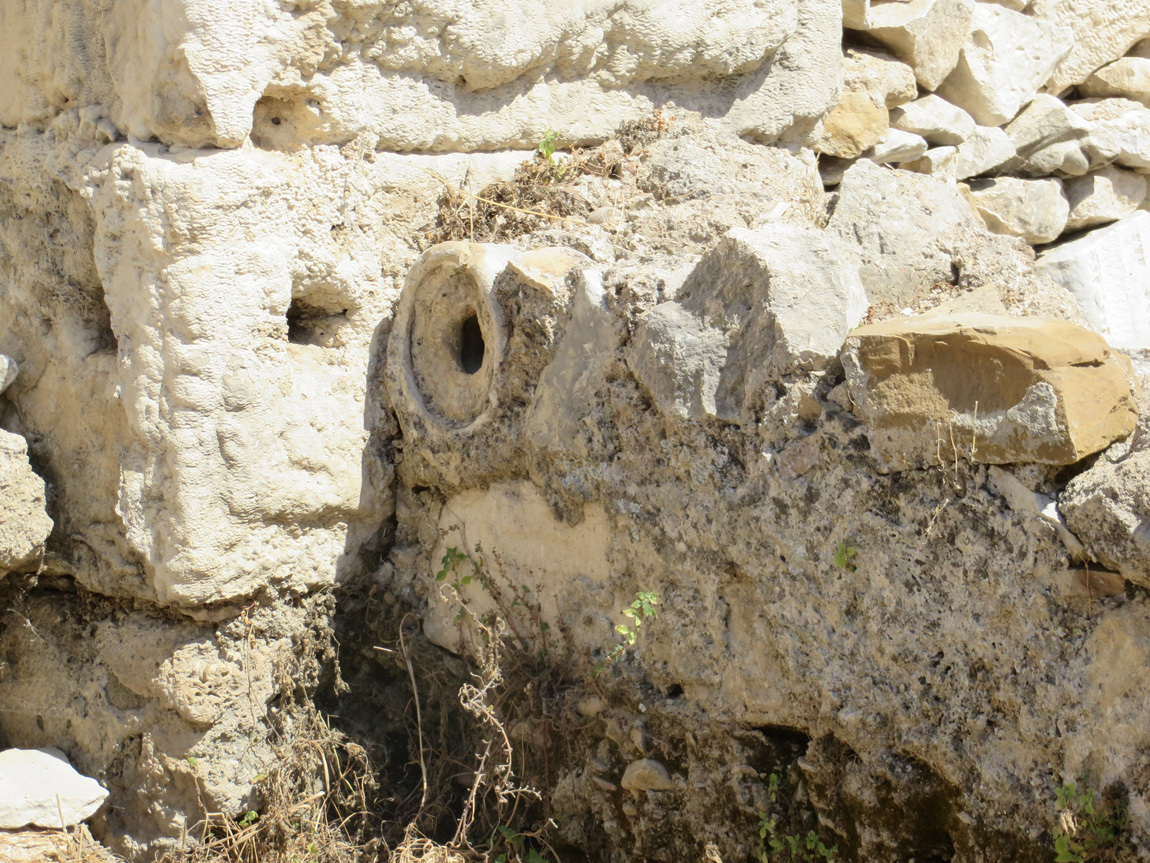
Dipping pool for athletes.
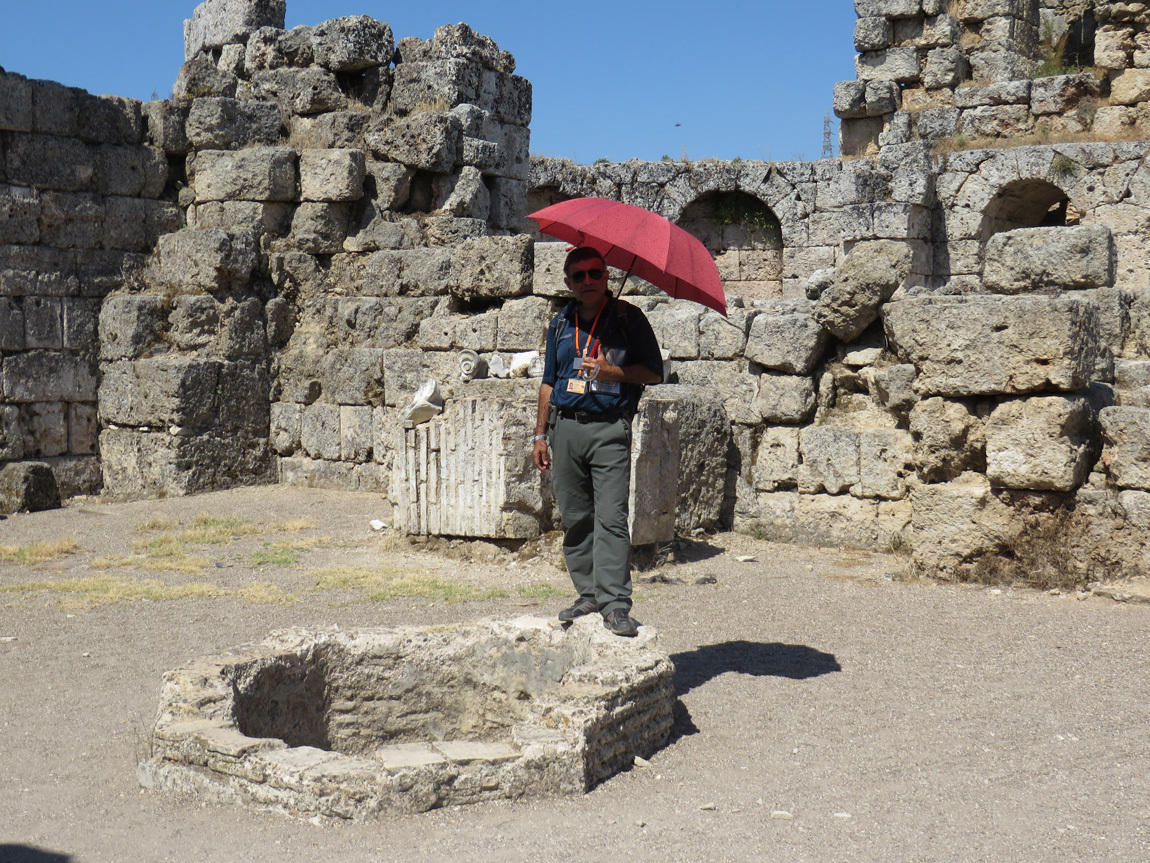
The old and the new: a jet above the ruins.
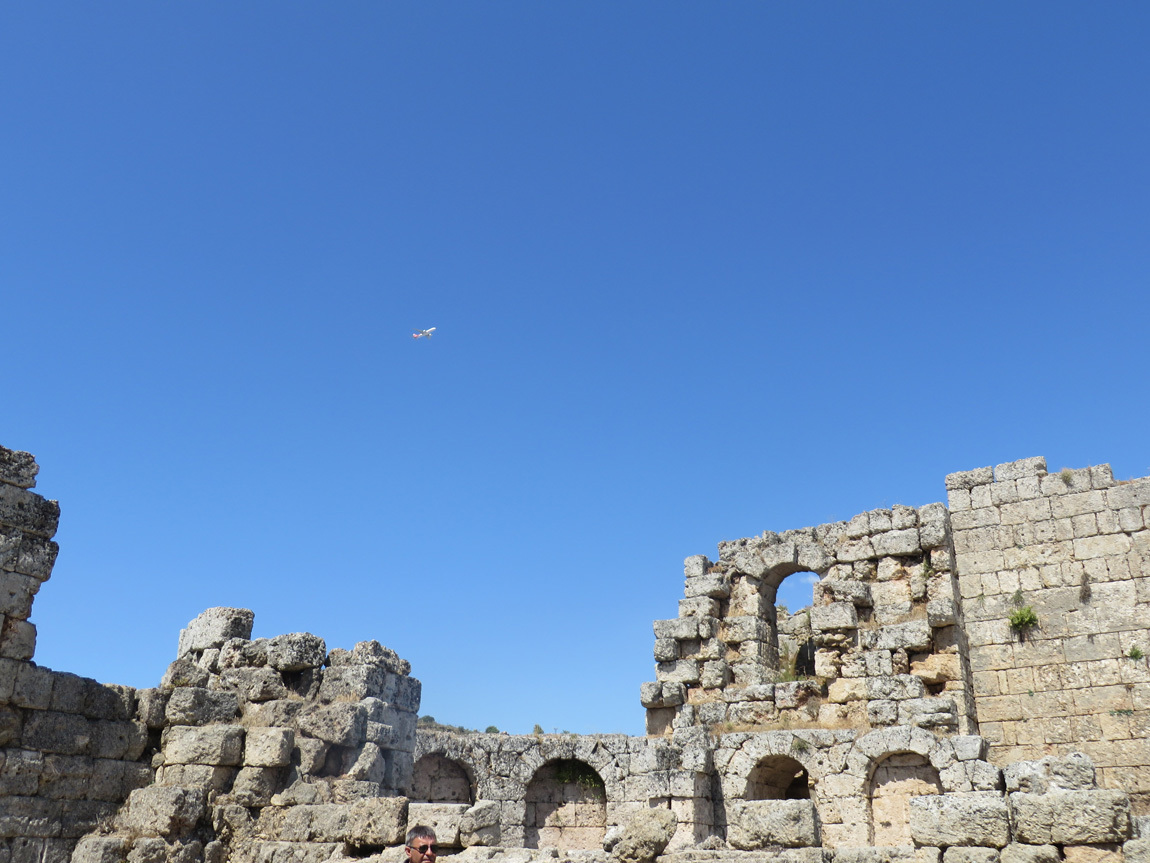
Pool area.
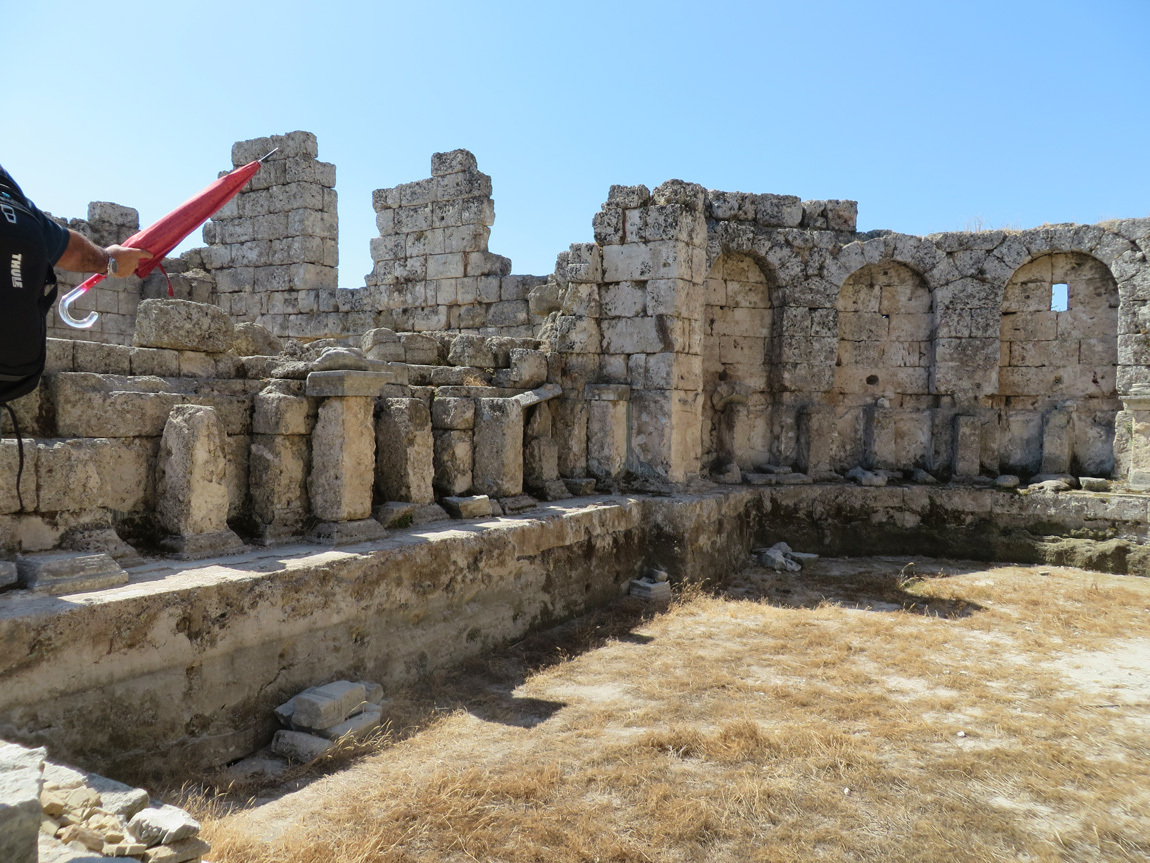
Columns.
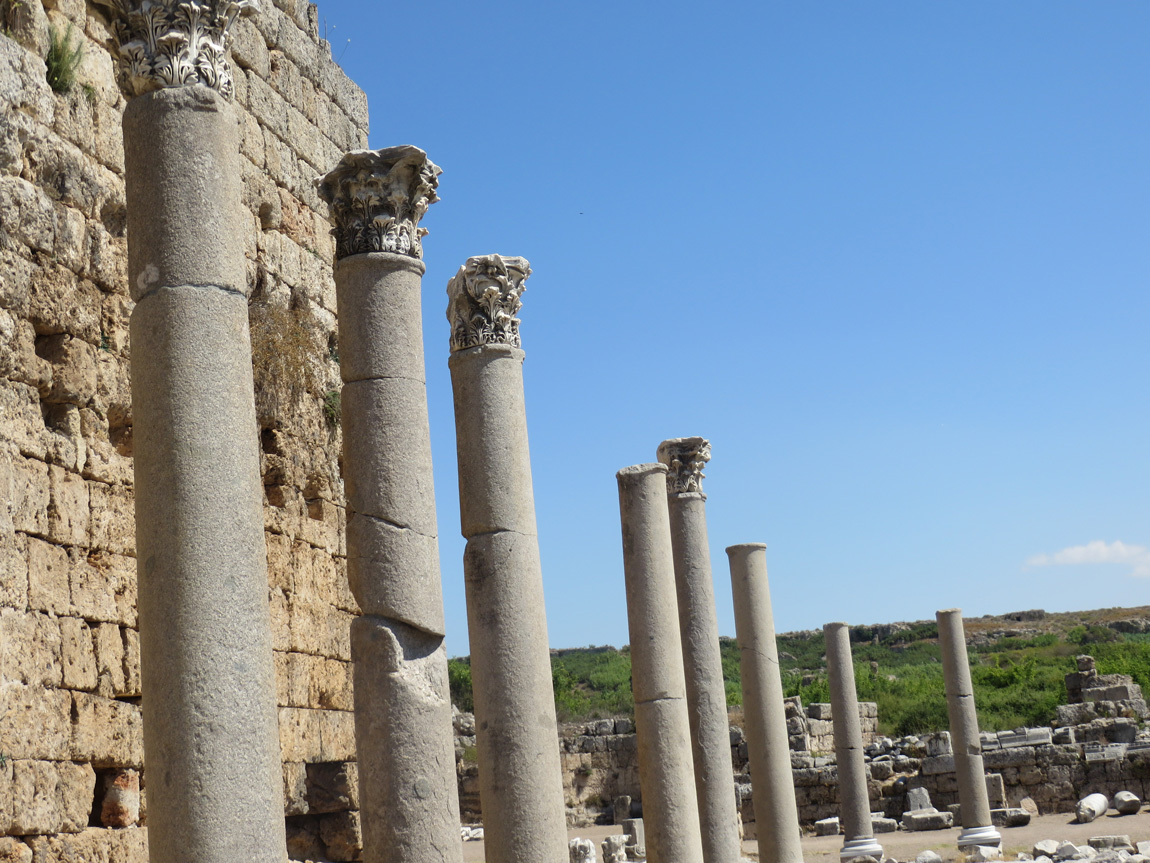
Tower.
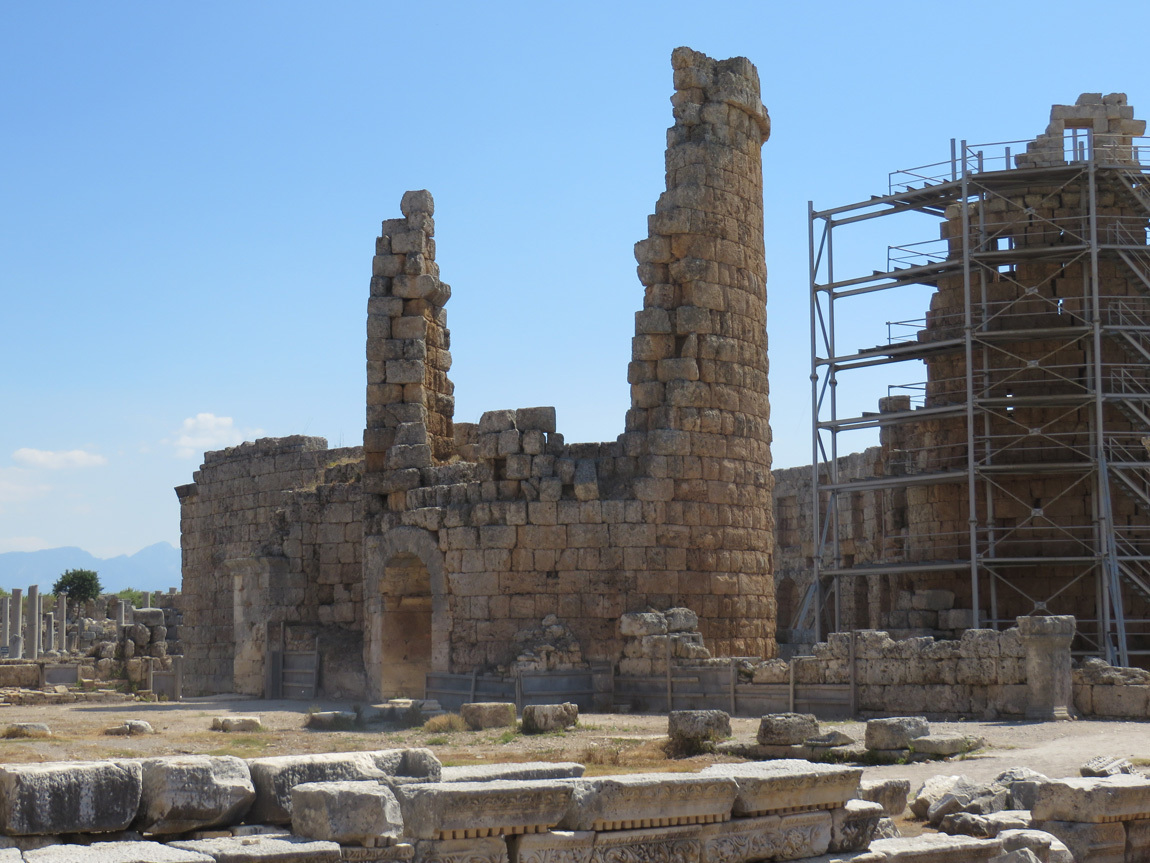
All of these ruins were buried by time. On the top of these half-downed structures, you can see earth and grasses growing.
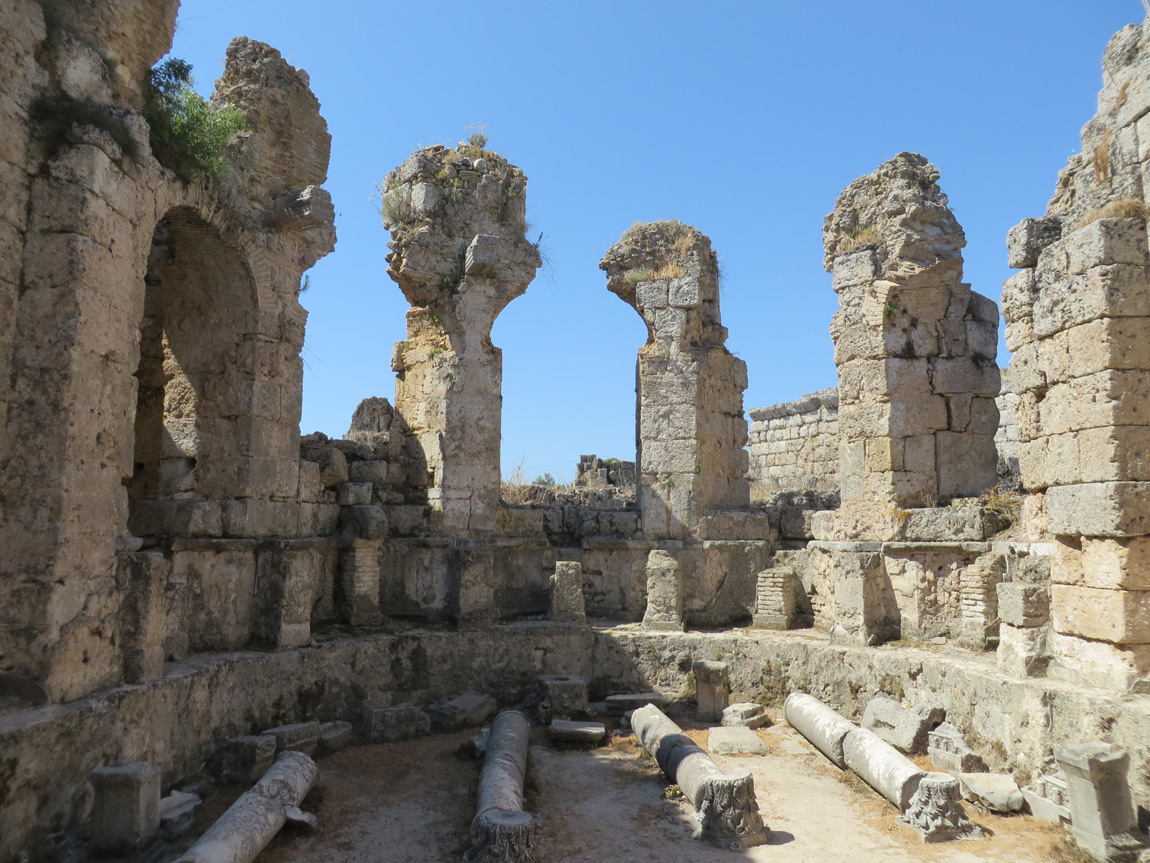
Amazing what they found under the dirt.
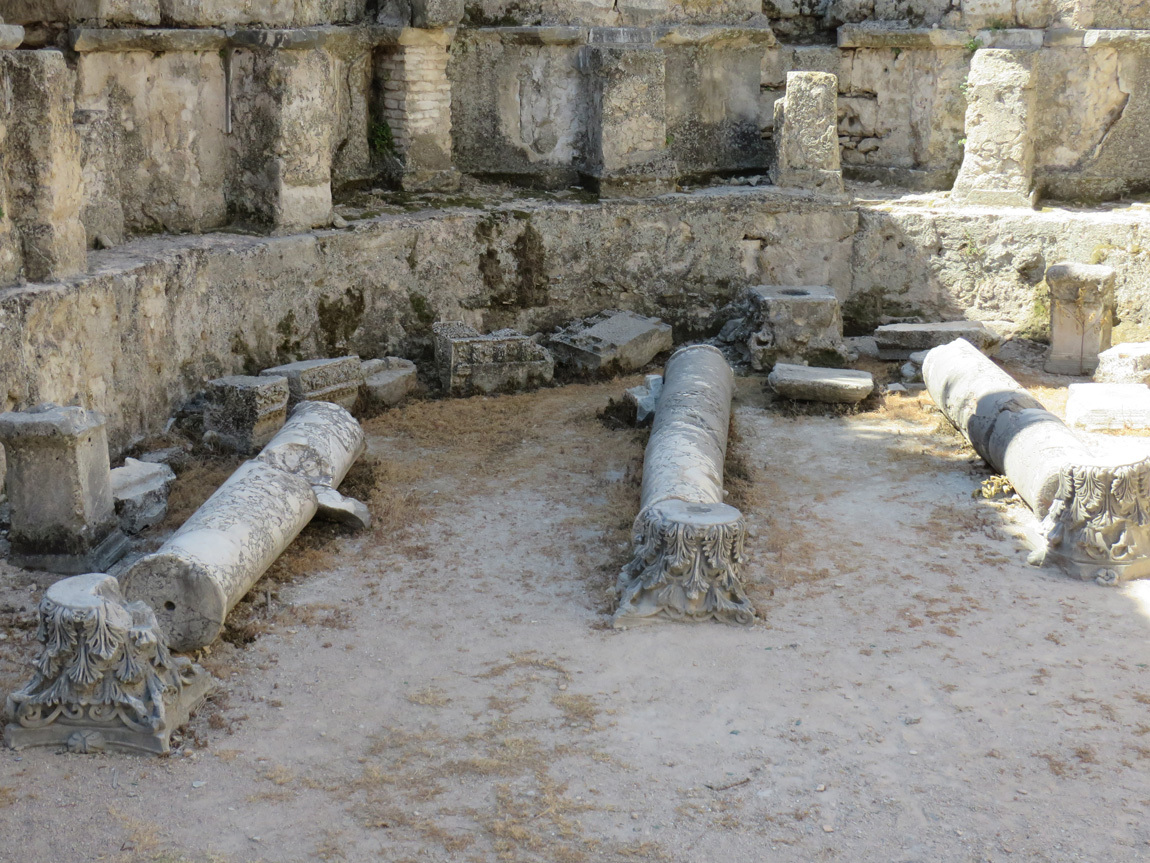
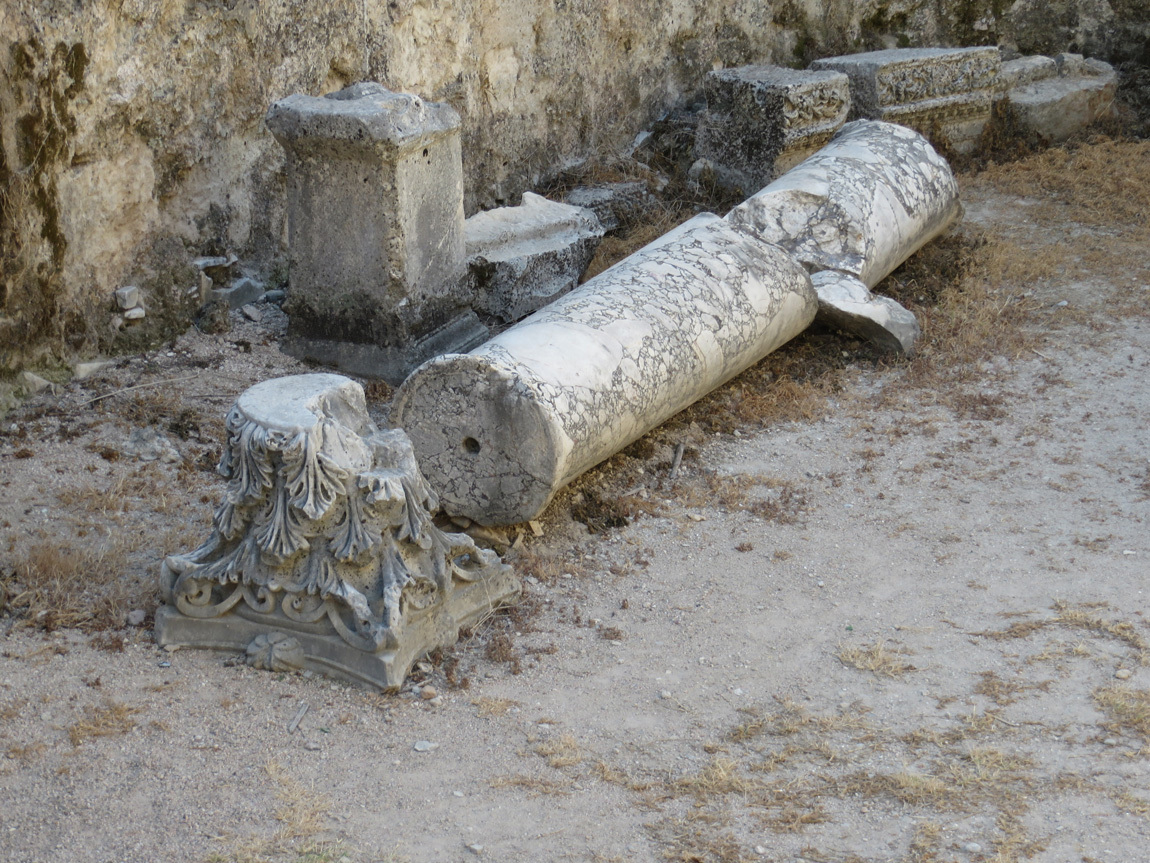
Earth on top of building.
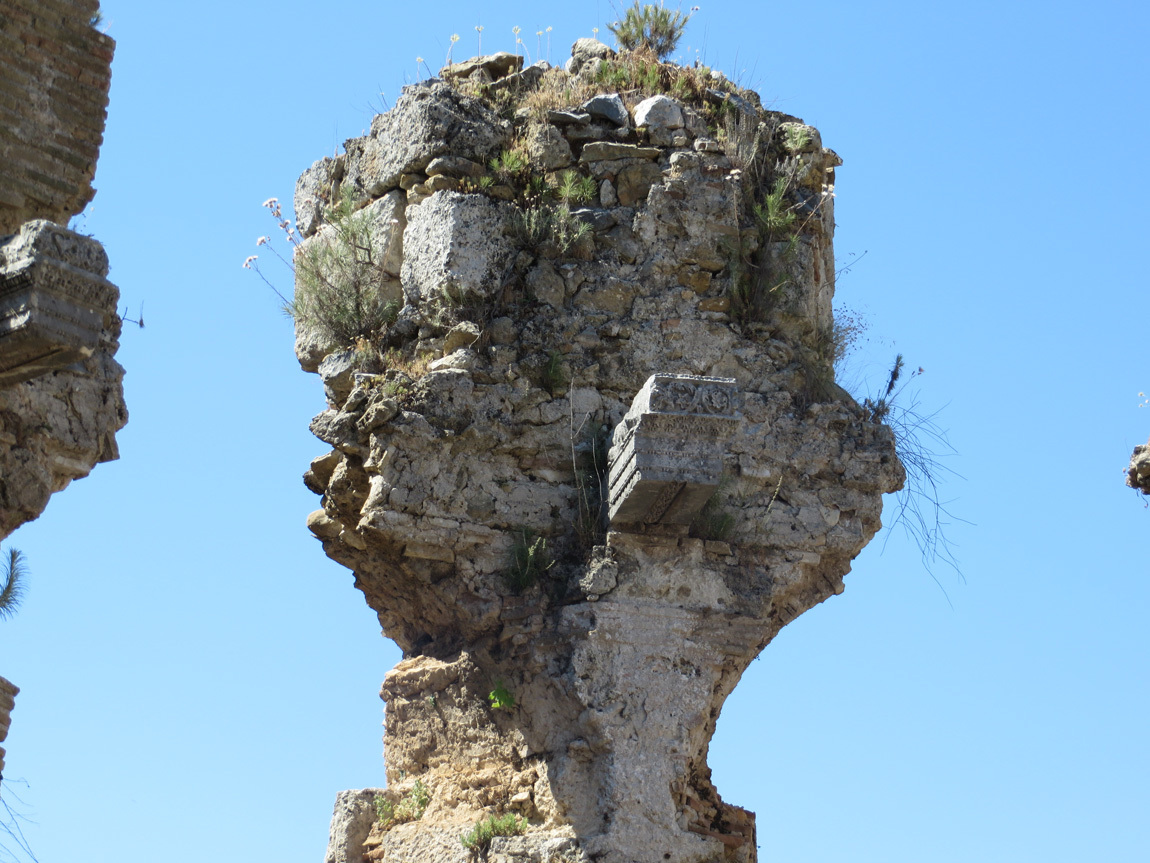
From inside the palaestra.
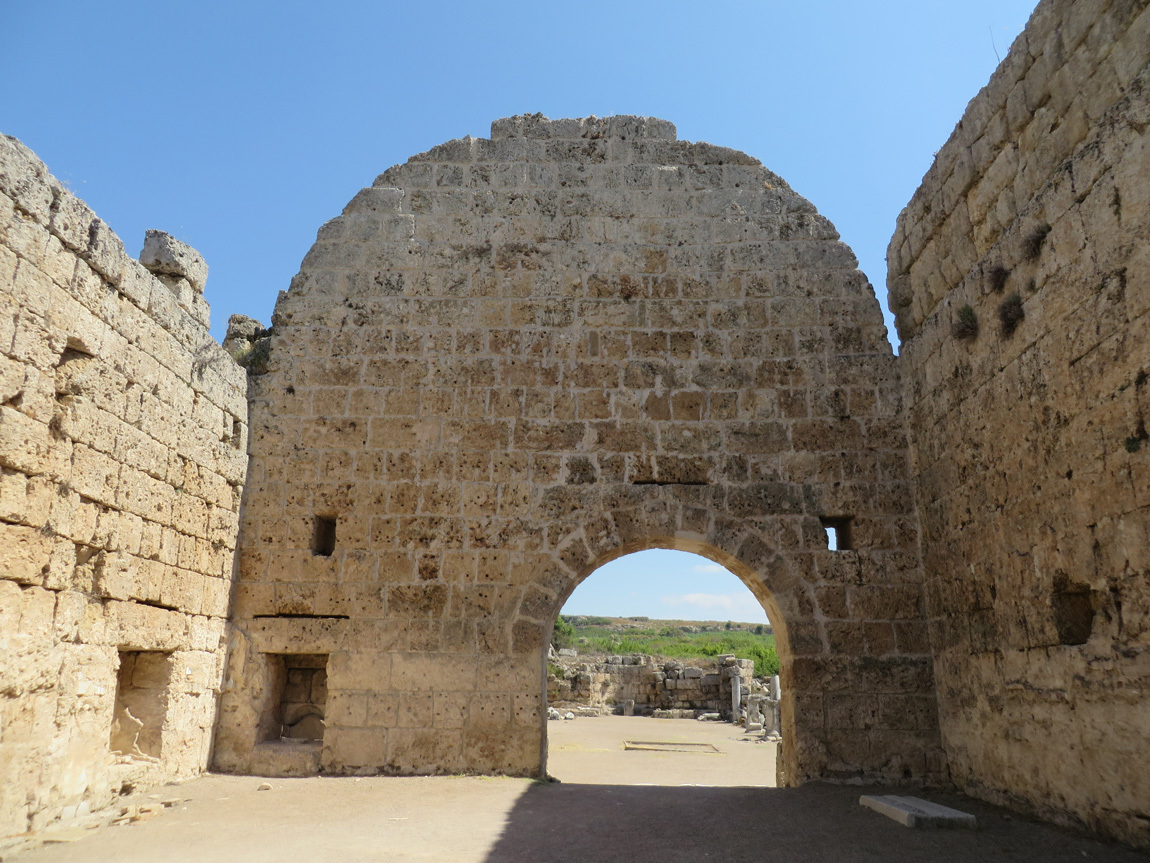
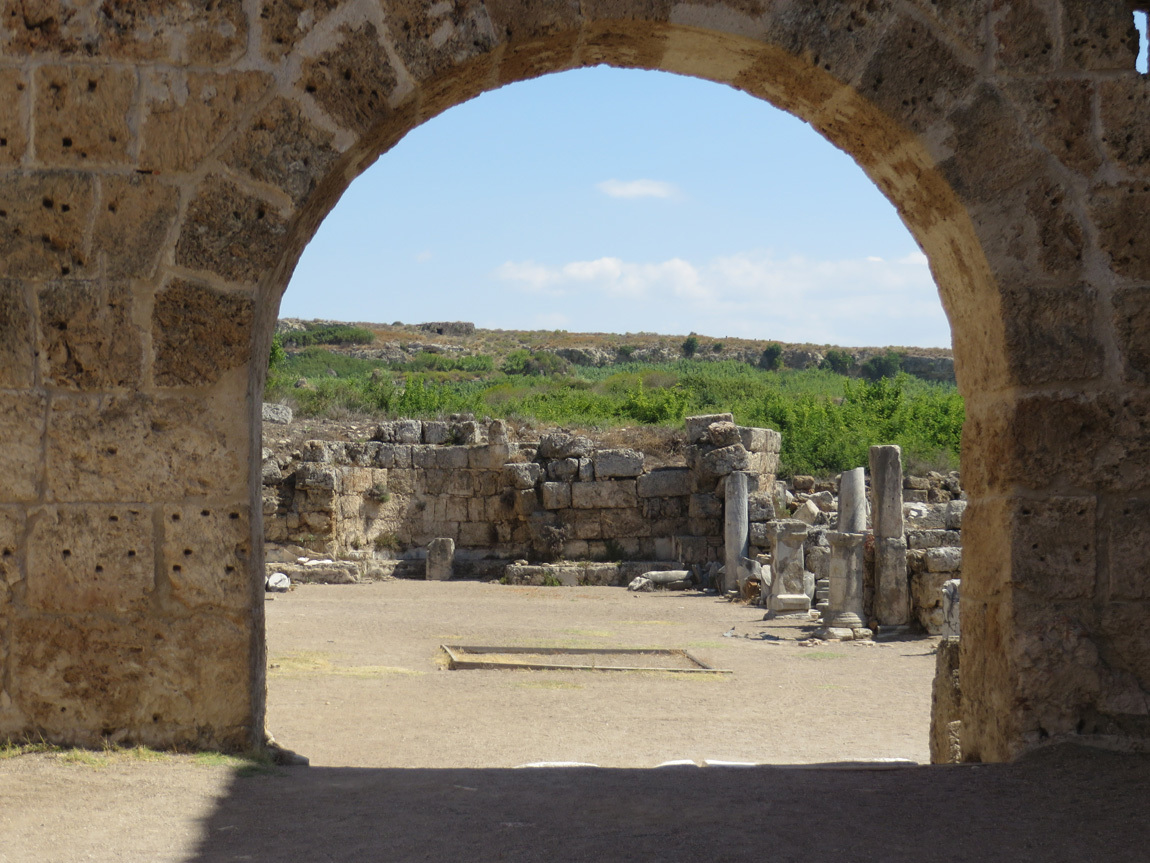
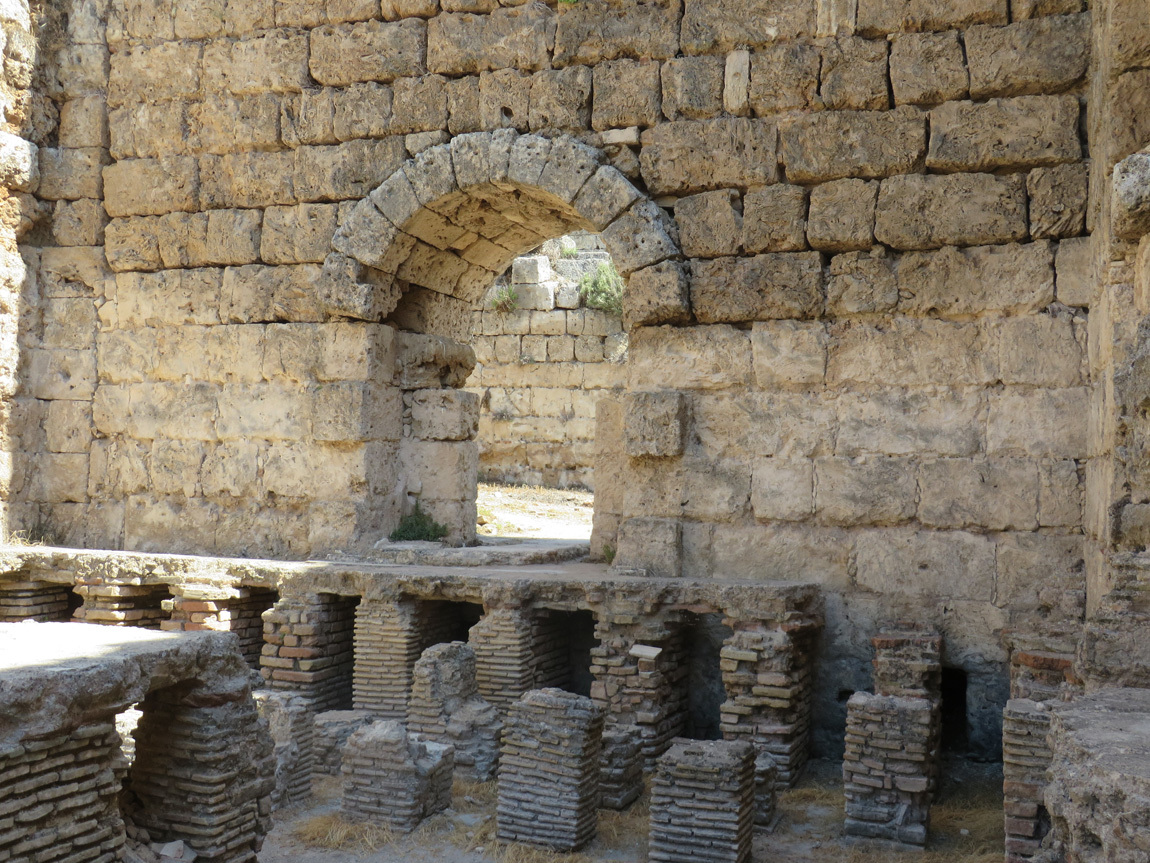
From a sign:
Rooms that served different functions like the dressing room (apodyterium), cold bath (frigidarium), warm bath (tepidarium), hot bath (caldarium), and exercise area (palaestra) were lined side by side and offered maximum utility to the bathers who had the chance to pass from one room to another of their choice. The heating system (hypocaust) can be seen beneath the pavement of some rooms today. The south baths in Perge also included rooms for intellectual activities, thus preserving the traditions of the Greek gymnasia.
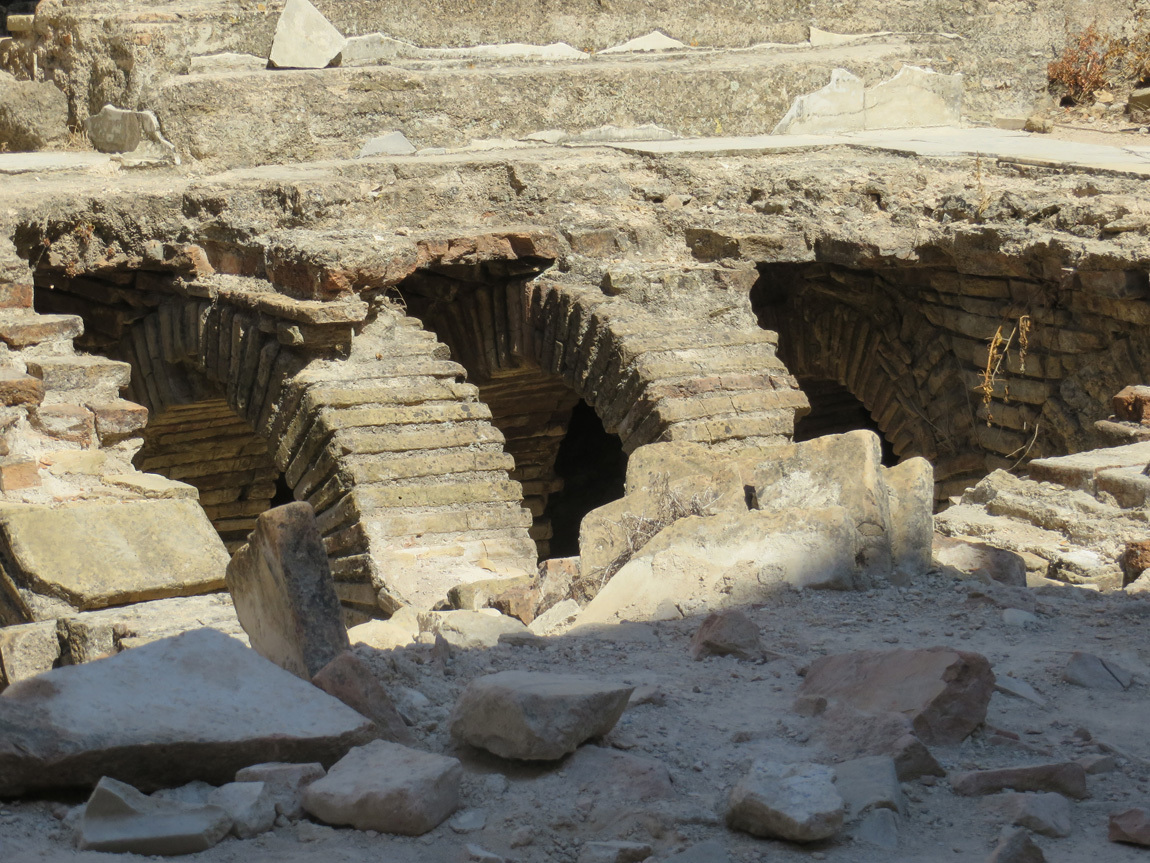
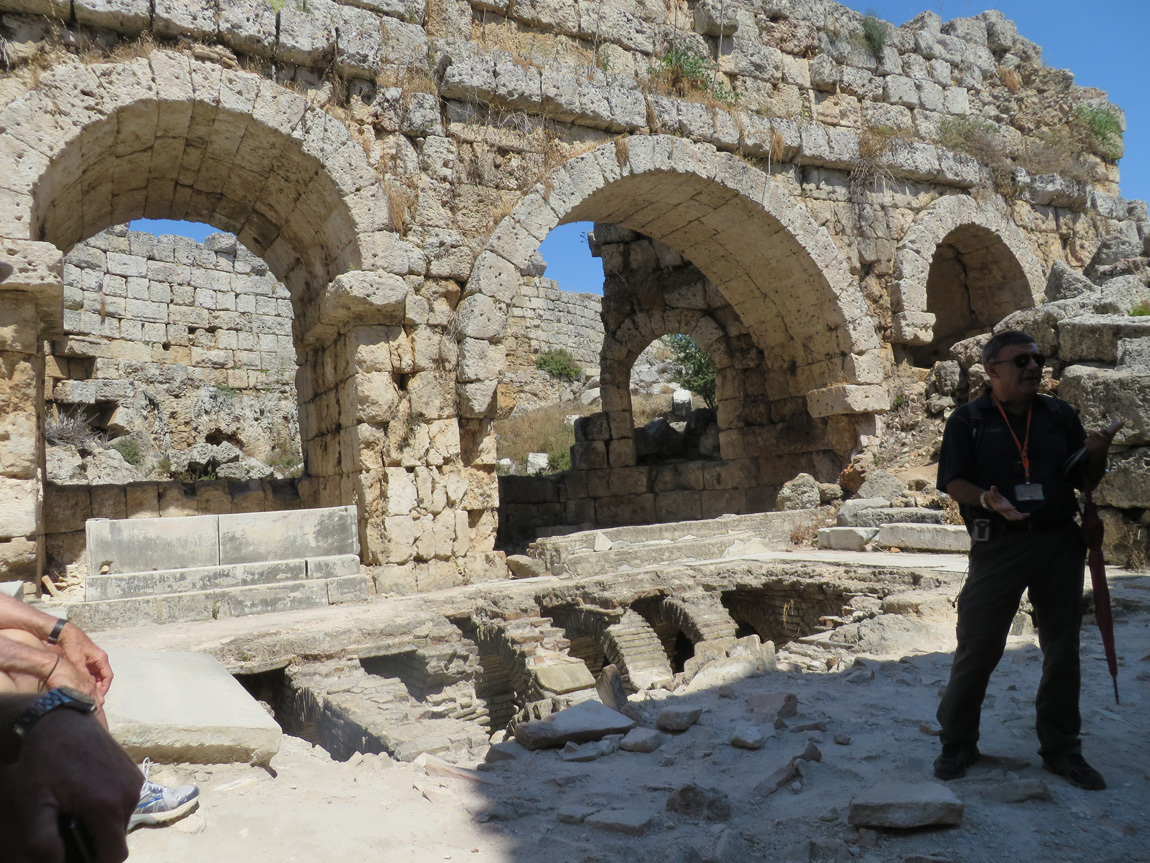
The yard outside the palaestra.
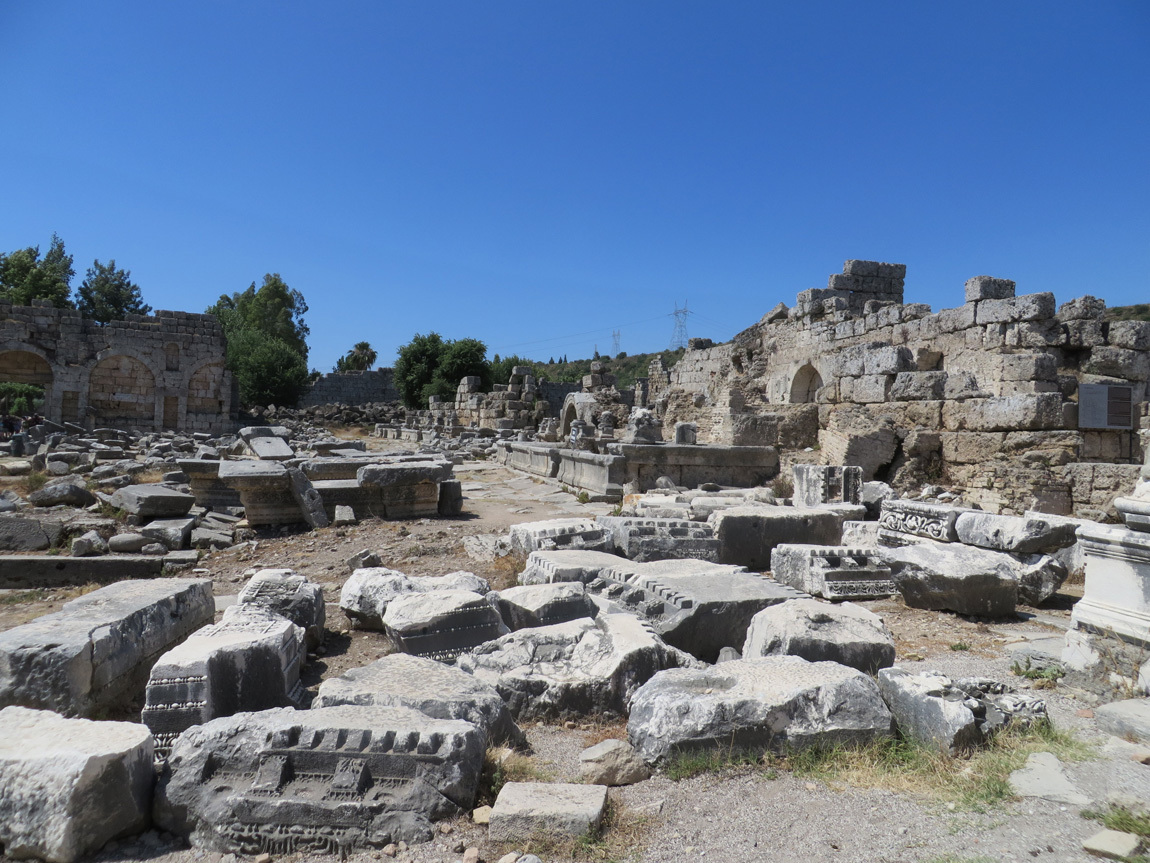
Columns.
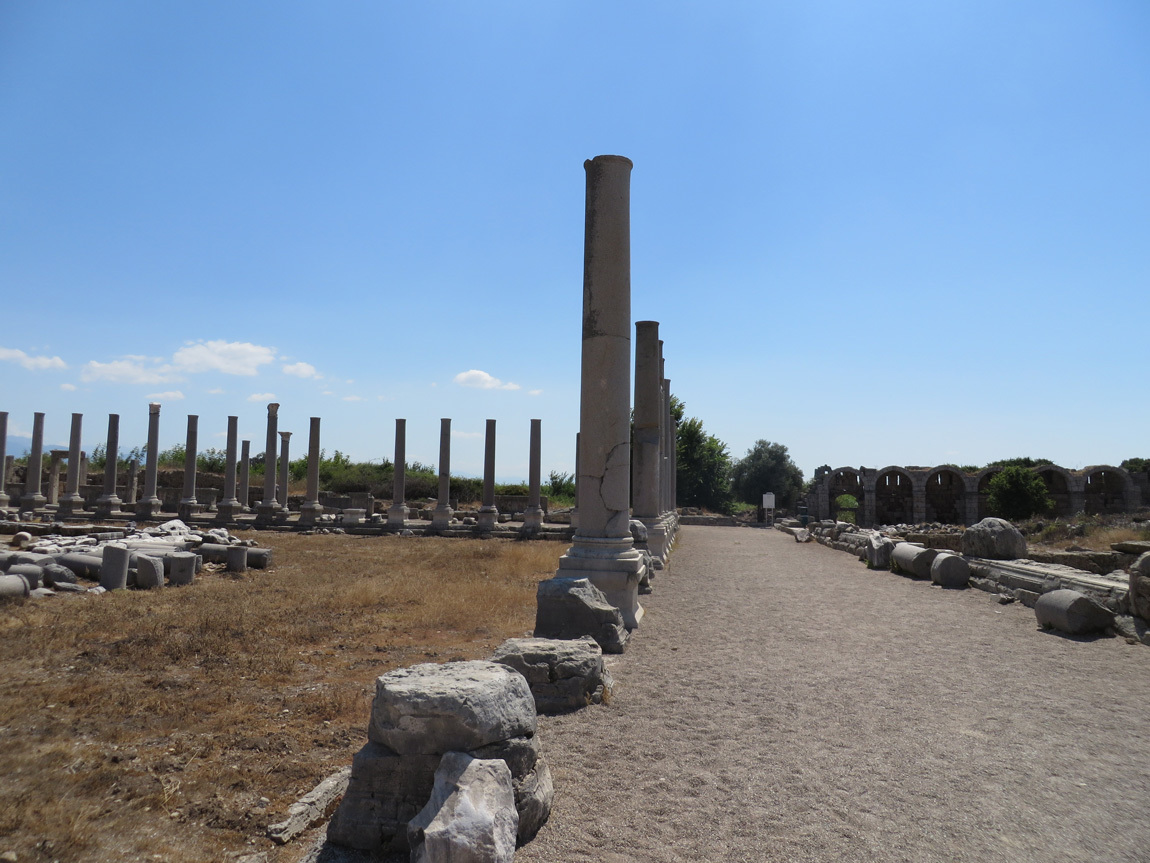
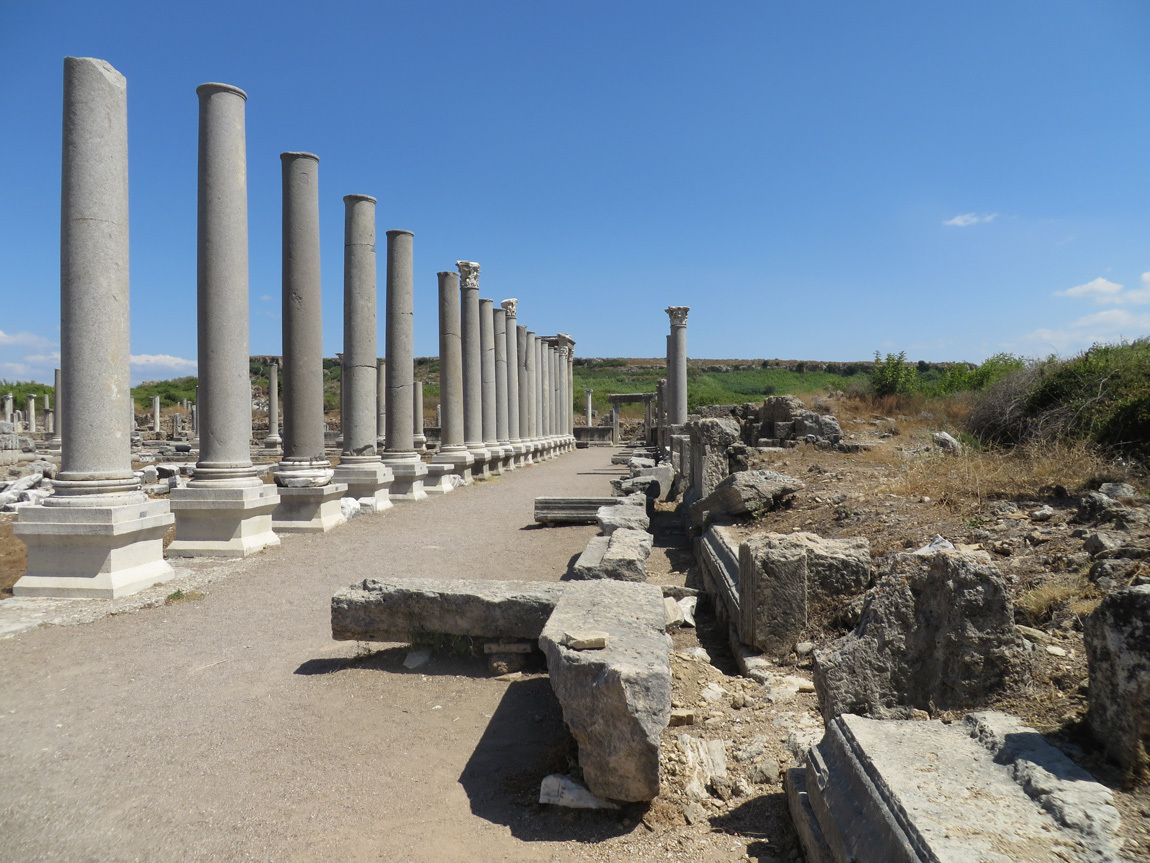
This was once a small store, or stall, where goods were sold.
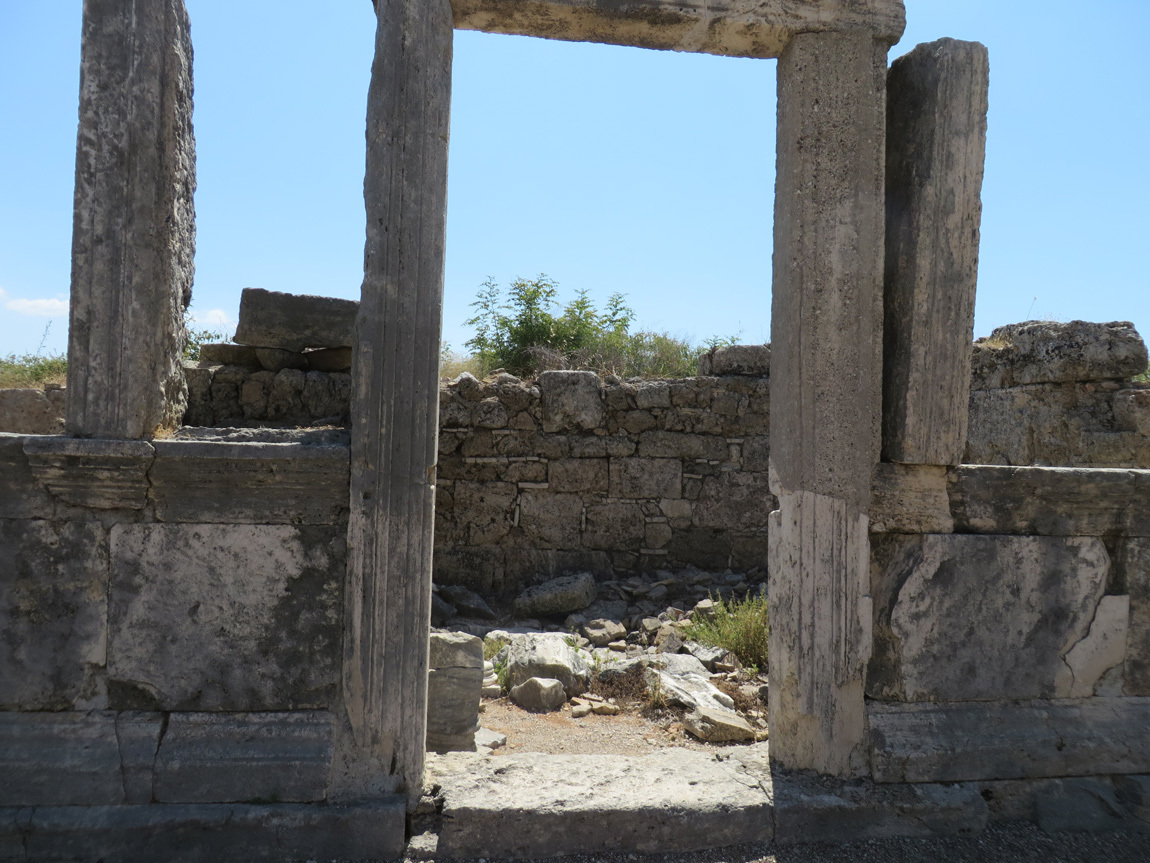
What do you think was sold at this stall?
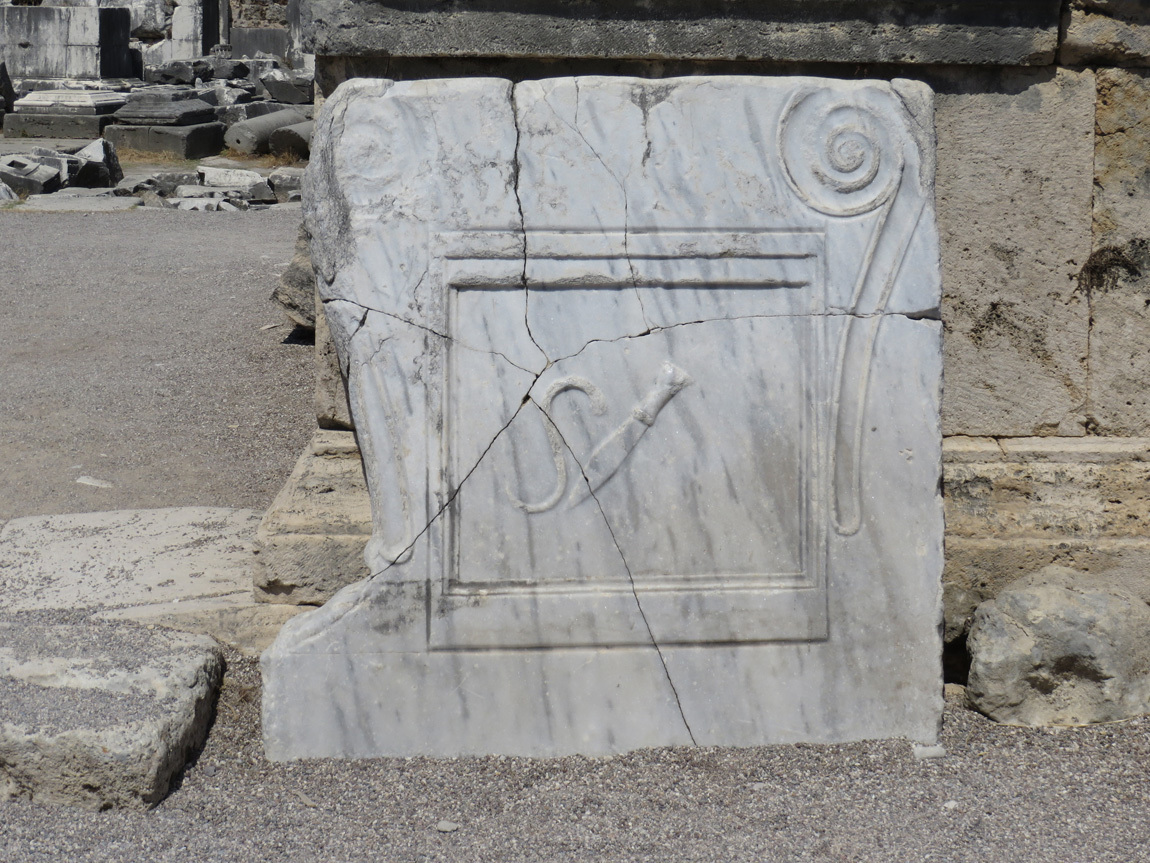
Water canal from the Roman age, and the remains of a road.
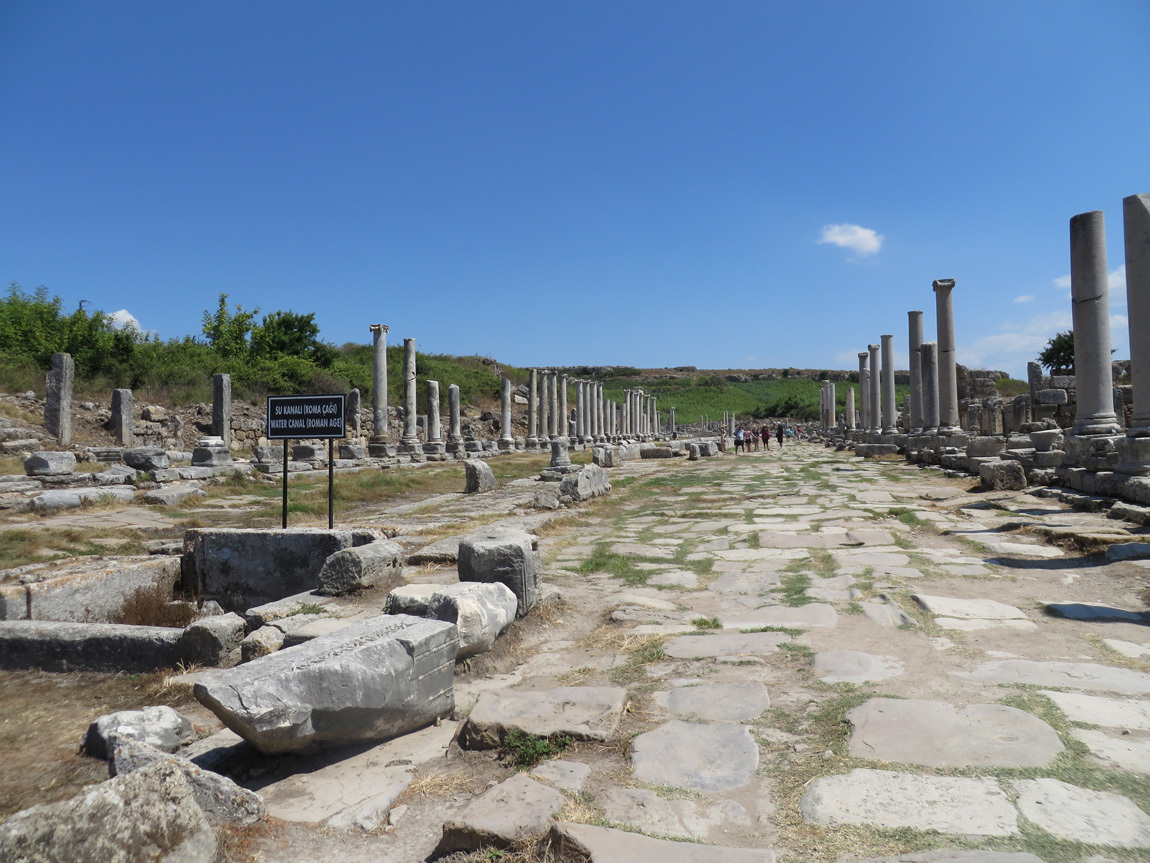
After two hours at Perge, it's time to make our way back to the bus. And of course first, the WC.
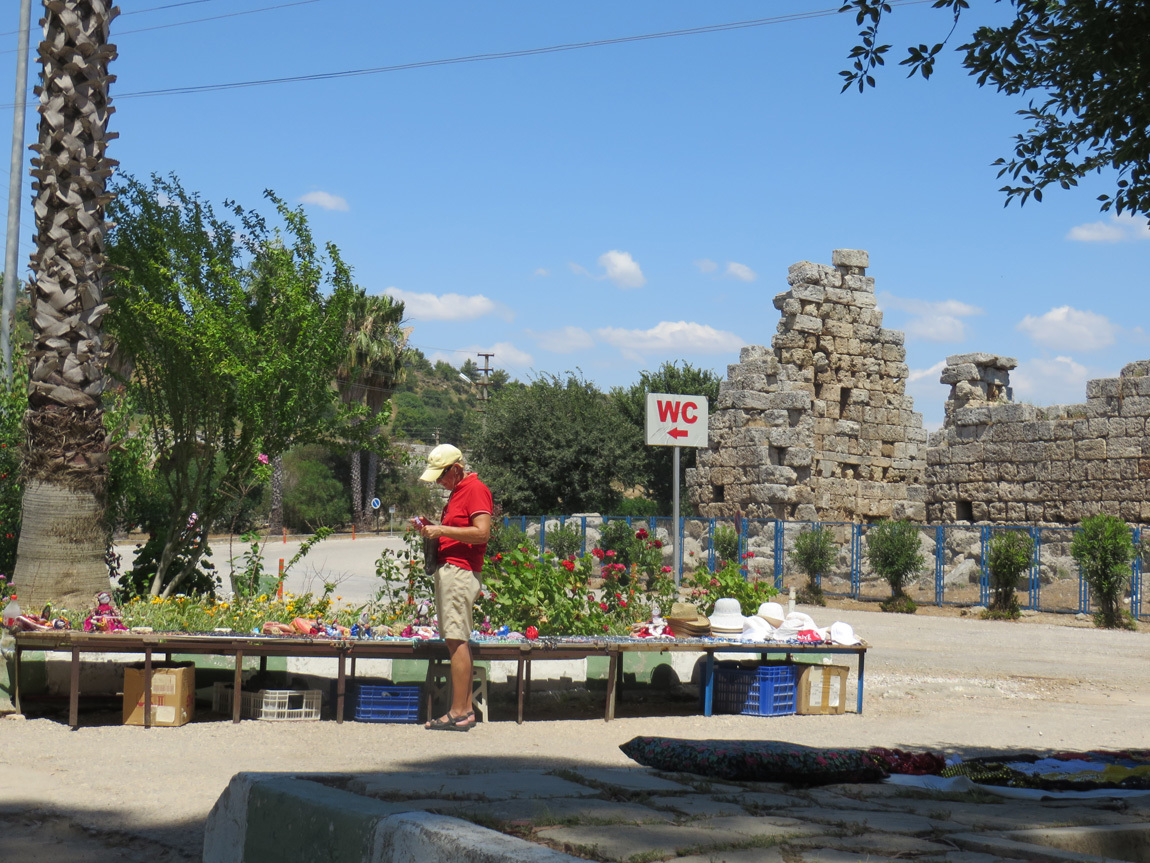
I spent a few dollars on some small souvenir bowls to use for mese en place.
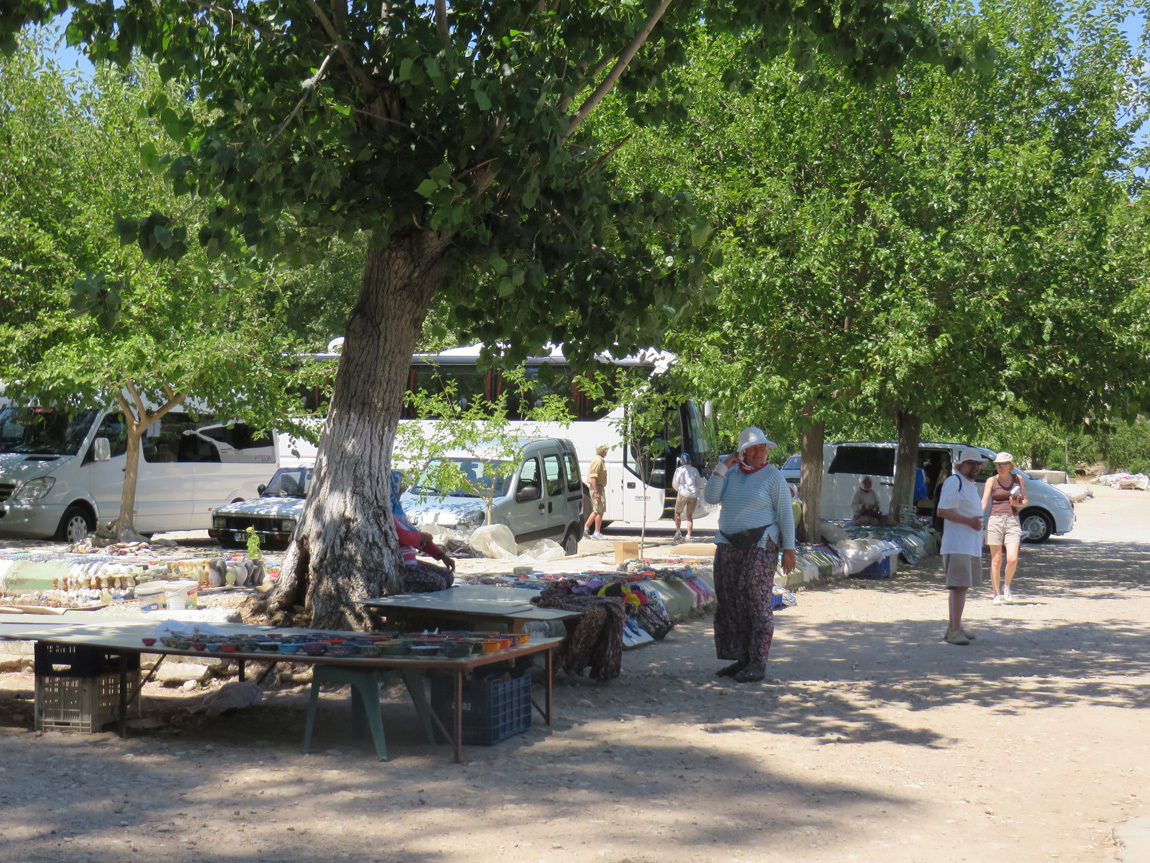
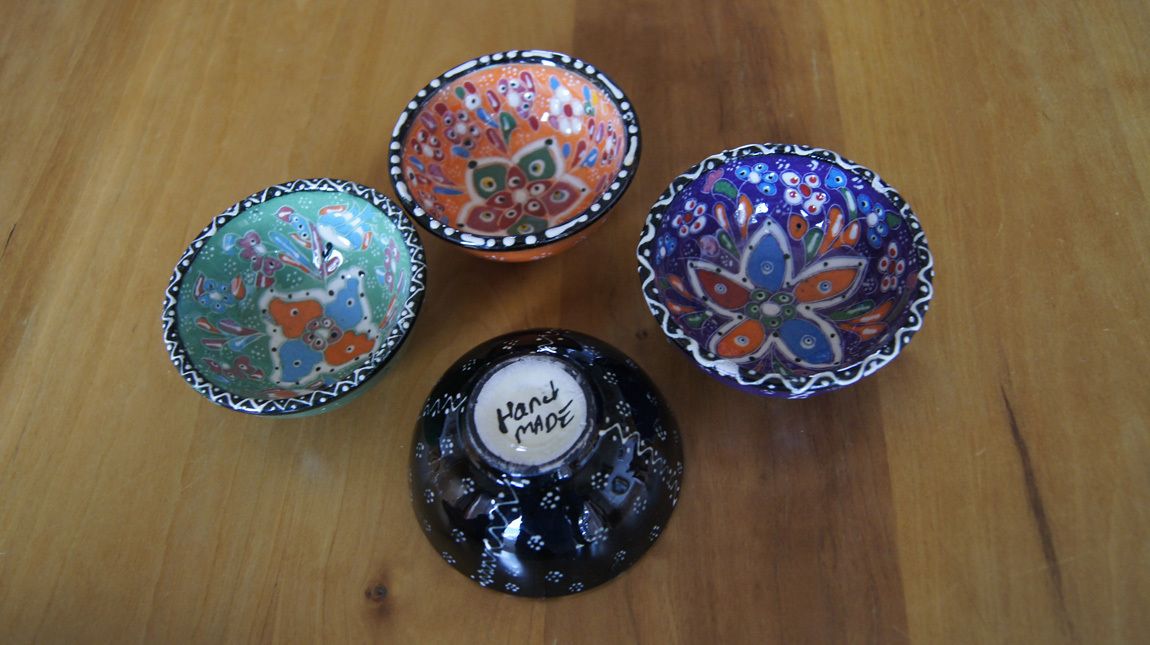
Perge was a great way to end our tour of the ruins in Turkey. Now it's time for the bus and the short trip back to our hotel in Antalya. Here is the pretty skyline:
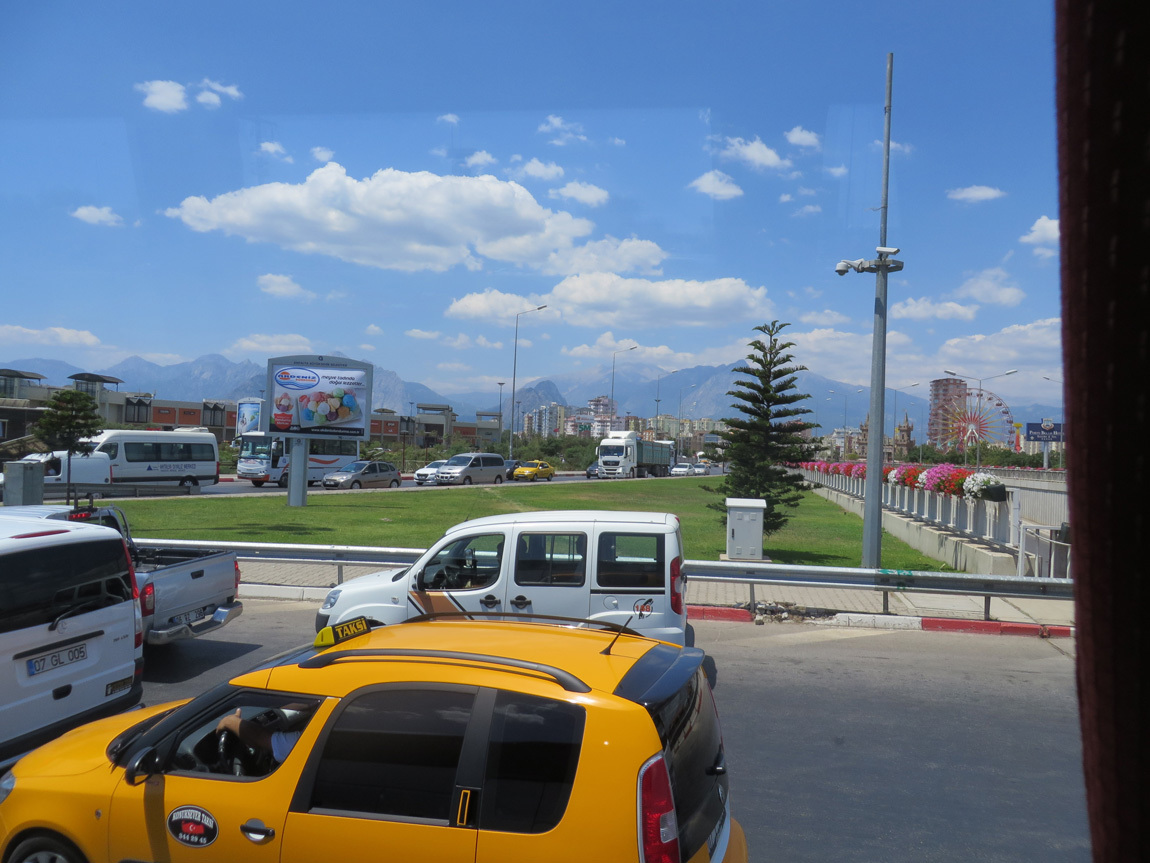
Navigation:
first Turkey post
next Turkey post
Our last day in Turkey. Today we visit Perge, on the outskirts of Antalya. Perge is almost as amazing as Ephesus, but nowhere near as crowded. It was hot, but there was a nice breeze, and some shady trees.
Perge (or Perga) was a city for over a thousand years. Established in about 1000 BC, it flourished during the Roman period, the time of Alexander the Great (356-323 BC). Perge was a viable metropolis until the thirteenth century.
The sign at the entrance. "Keep clear the ancienty city". Love it.

Walking to the ancienty theater.

Ruins and power lines.

Archways into the stadium area. Some of the archways end not in a passageway, but in a niche or a room.

John starting through an archway. Back in the times of old, he would have handed a token to pass through the passageway to attend the games.

Archways and niches.

I like the trees and the columns.

This is one of the doors into the ancient city. It dates to the Roman and Hellenistic times, about 3-4 AD.

Detail work:


Many of the sculptures that decorated the area are now in the Antalya Museum. Below is a photo of a field of pieces of the structures and columns and part of a building with archways. Also notice the restoration efforts of one of the towers.

This building is called a palaestra, a rectangular court surrounded by columns. The palaestra has rooms where athletes would train and all would gather to socialize. We saw rooms where they trained, dressed, and storage rooms for clothes and sundries. There were hot, warm, and cold baths. Rooms for great feasts, and then rooms where they purged their food so they could eat more. (This room for purging, vomitorium, is somewhat disputed when I try to Google for more information, although Ali told us it was so.)

One of the pools.

Pipes for water.

Dipping pool for athletes.

The old and the new: a jet above the ruins.

Pool area.

Columns.

Tower.

All of these ruins were buried by time. On the top of these half-downed structures, you can see earth and grasses growing.

Amazing what they found under the dirt.


Earth on top of building.

From inside the palaestra.



From a sign:
Rooms that served different functions like the dressing room (apodyterium), cold bath (frigidarium), warm bath (tepidarium), hot bath (caldarium), and exercise area (palaestra) were lined side by side and offered maximum utility to the bathers who had the chance to pass from one room to another of their choice. The heating system (hypocaust) can be seen beneath the pavement of some rooms today. The south baths in Perge also included rooms for intellectual activities, thus preserving the traditions of the Greek gymnasia.


The yard outside the palaestra.

Columns.


This was once a small store, or stall, where goods were sold.

What do you think was sold at this stall?

Water canal from the Roman age, and the remains of a road.

After two hours at Perge, it's time to make our way back to the bus. And of course first, the WC.

I spent a few dollars on some small souvenir bowls to use for mese en place.


Perge was a great way to end our tour of the ruins in Turkey. Now it's time for the bus and the short trip back to our hotel in Antalya. Here is the pretty skyline:

Navigation:
first Turkey post
next Turkey post
Comments
No comments yet
Add Comment